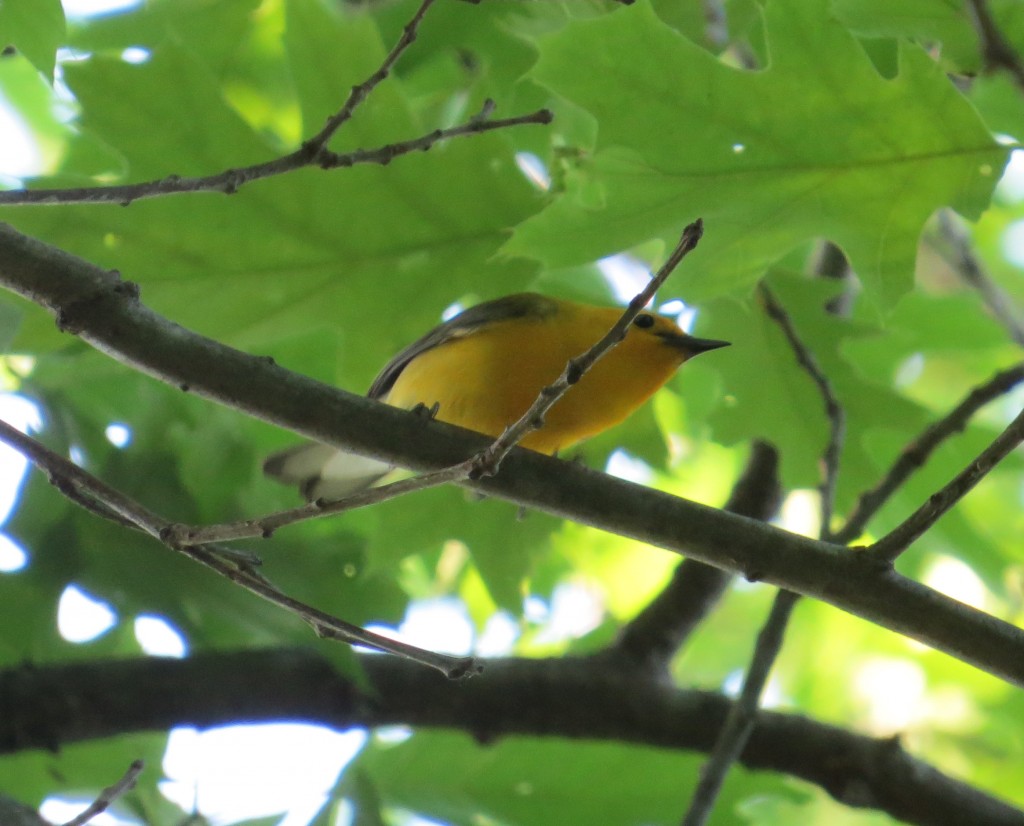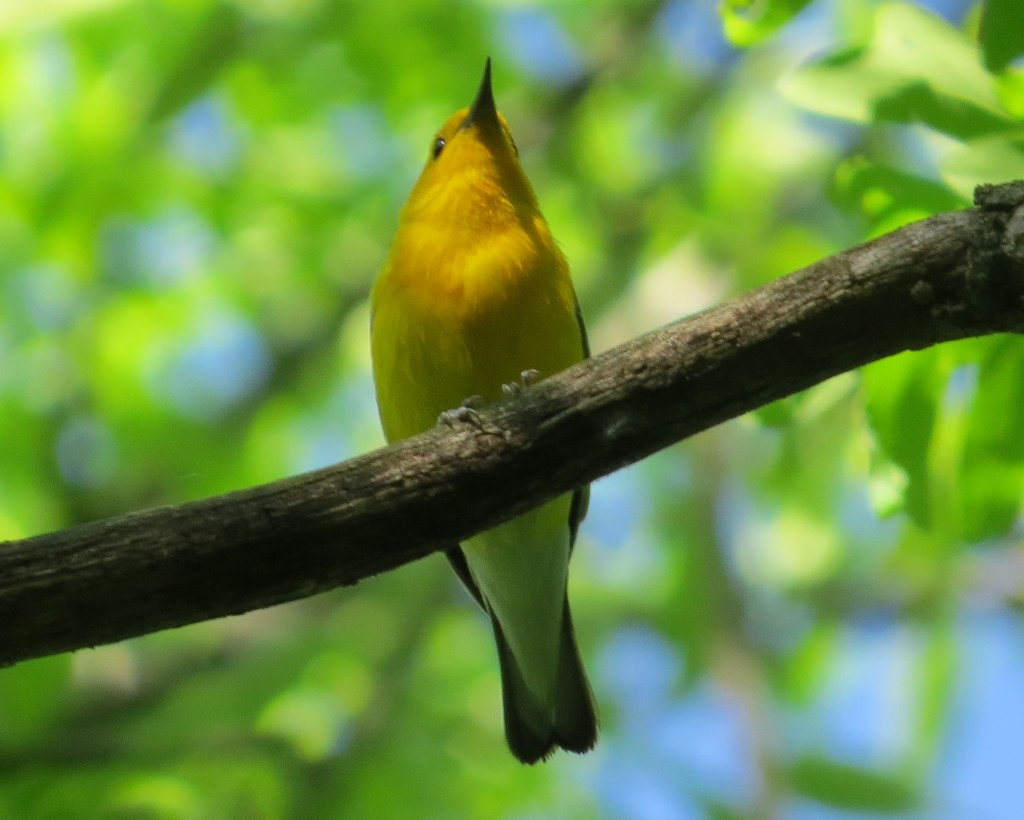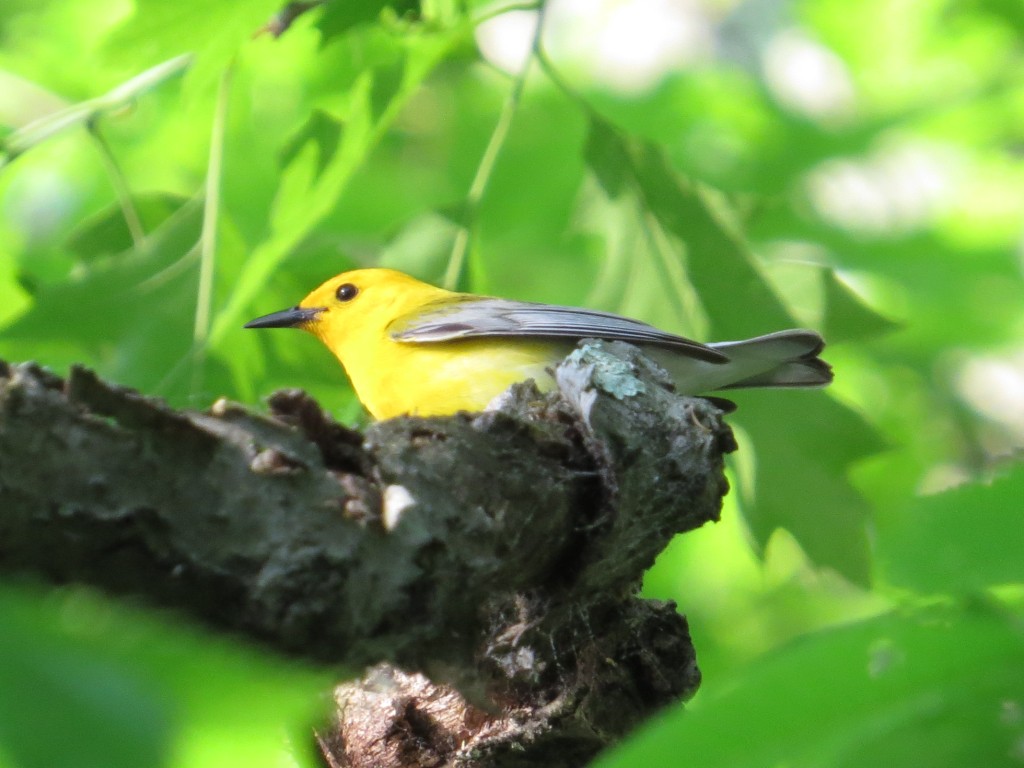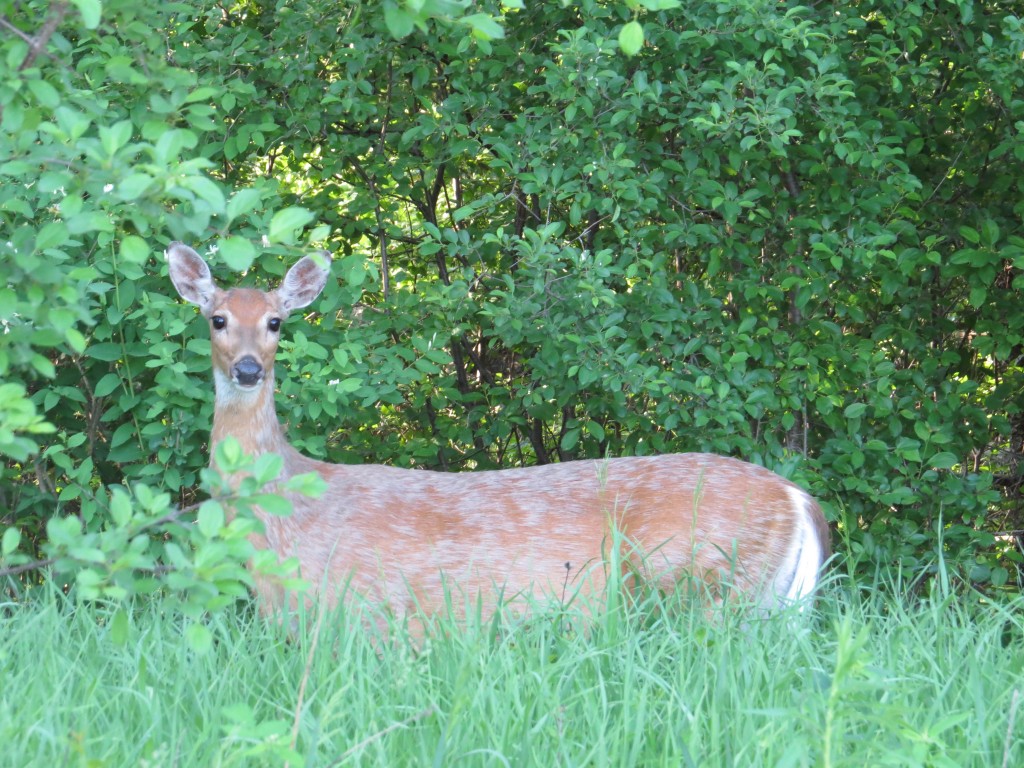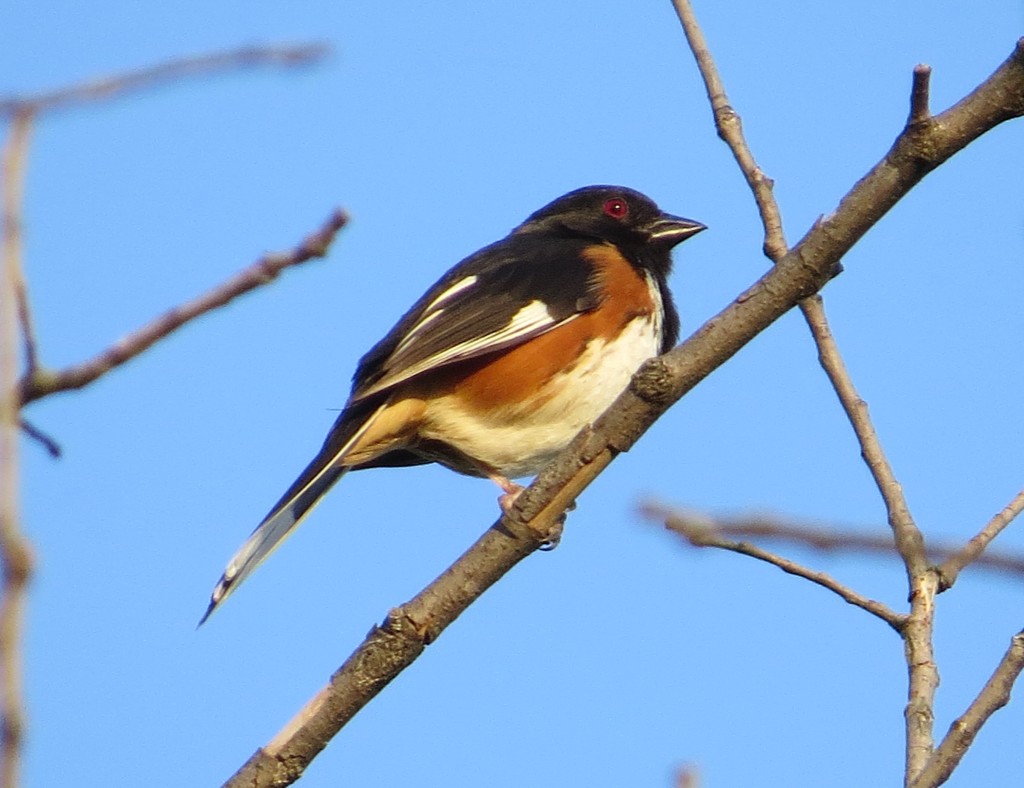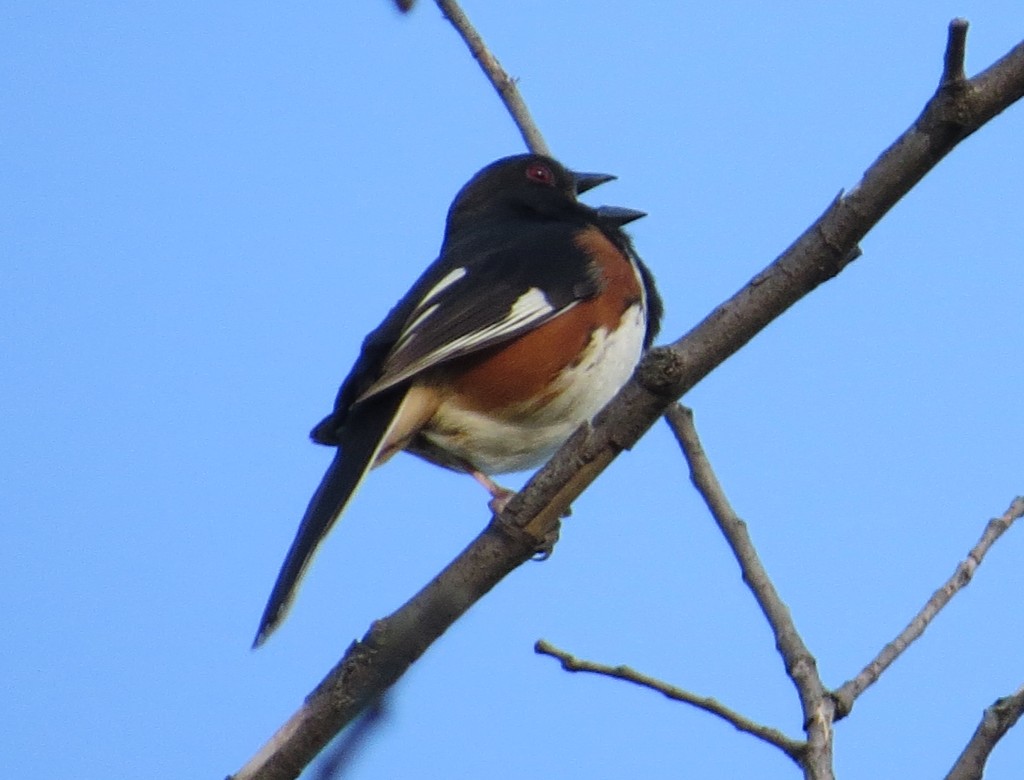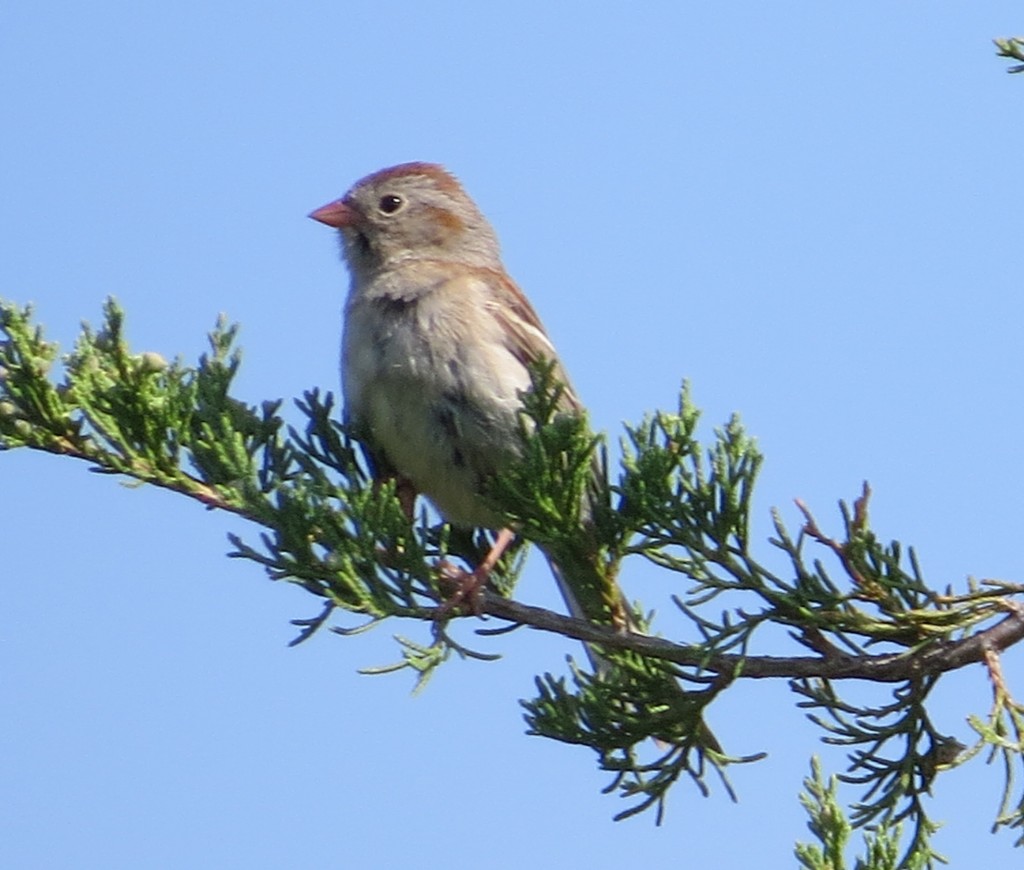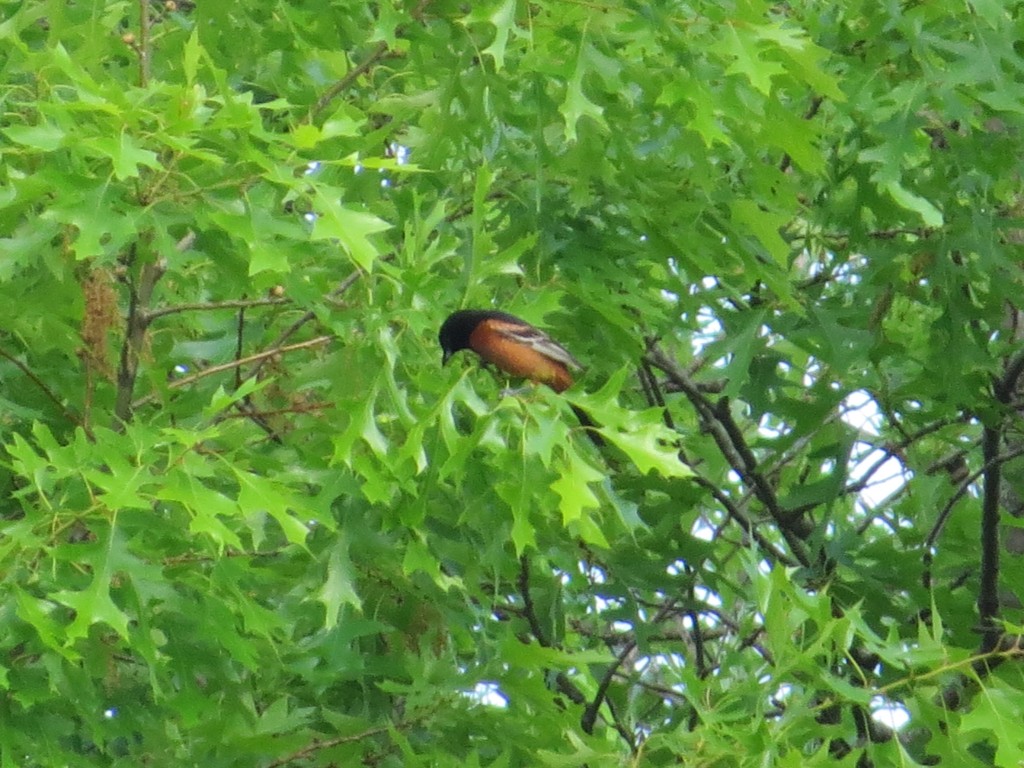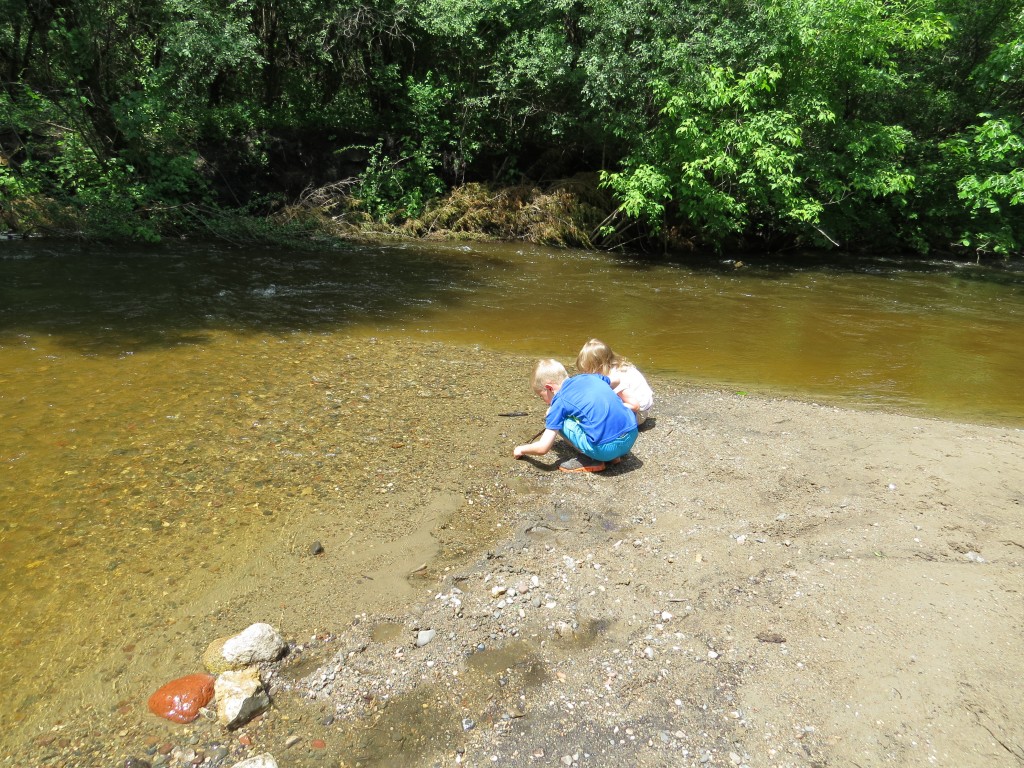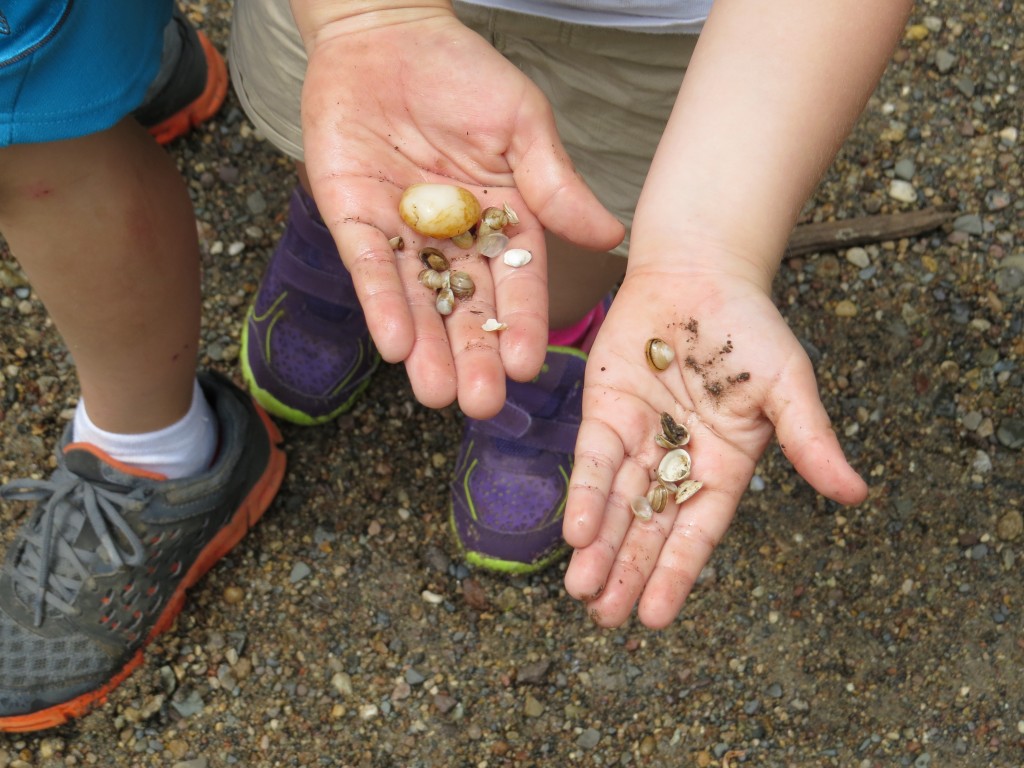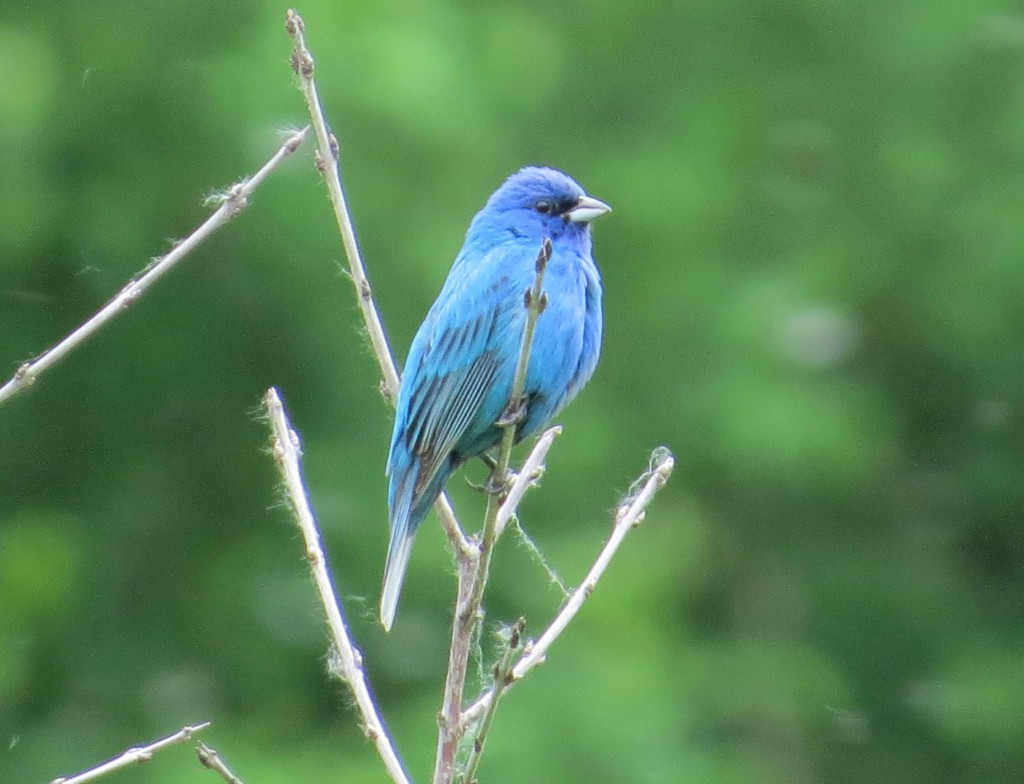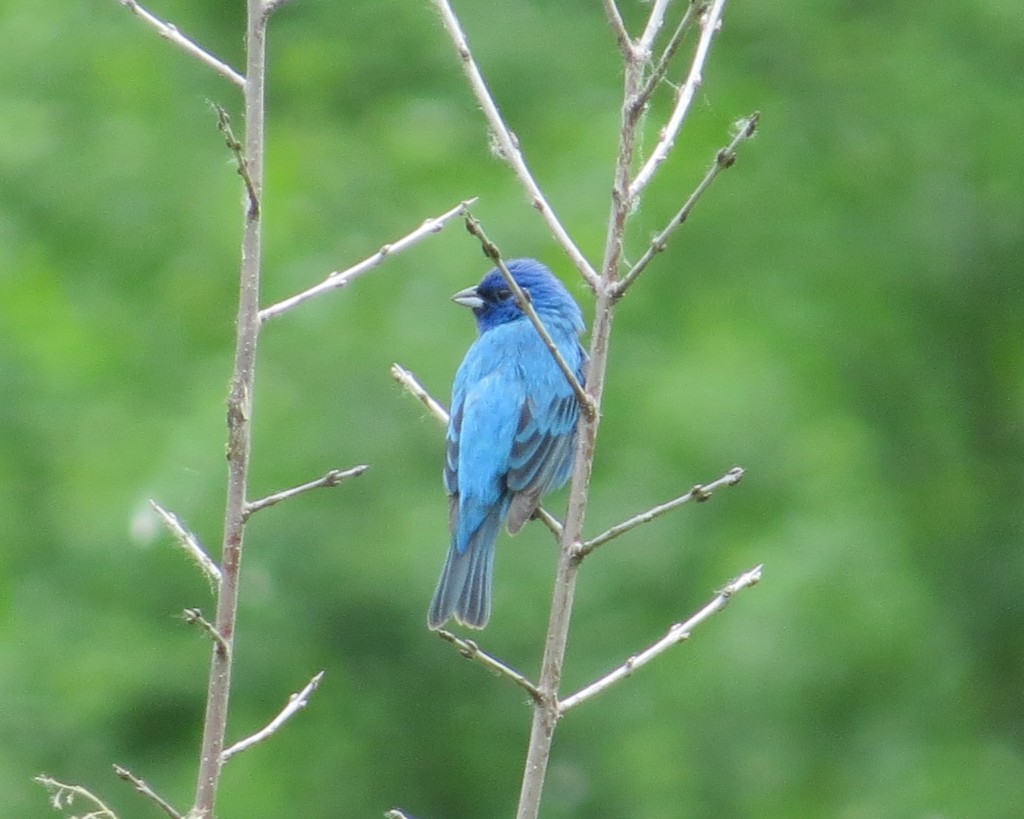The birds have not allowed any dust to collect on this blog. It is, of course, hard to collect dust when the bird clutter is accumulating at an alarming rate. Lest I be featured on some blogger hoarding show, it’s time to start shoveling. This post ties up a lot of loose birding ends. In truth I haven’t been too excited about writing it since it does not coalesce around a single bird or birding locale. Despite that, there are a lot of good nuggets in here–hopefully something for everybody.
Tommy Trip–The Rest of Wisconsin
Let’s get started with wrapping up the Tommy trip. Not making the cut for the Wisconsin posts was the locally common Eastern Towhee. Before this trip, this bird was still very novel to me as I had only ever seen just one male and one female. I got my fill after this trip. This bird, which was a lifer for Tommy, was everywhere.
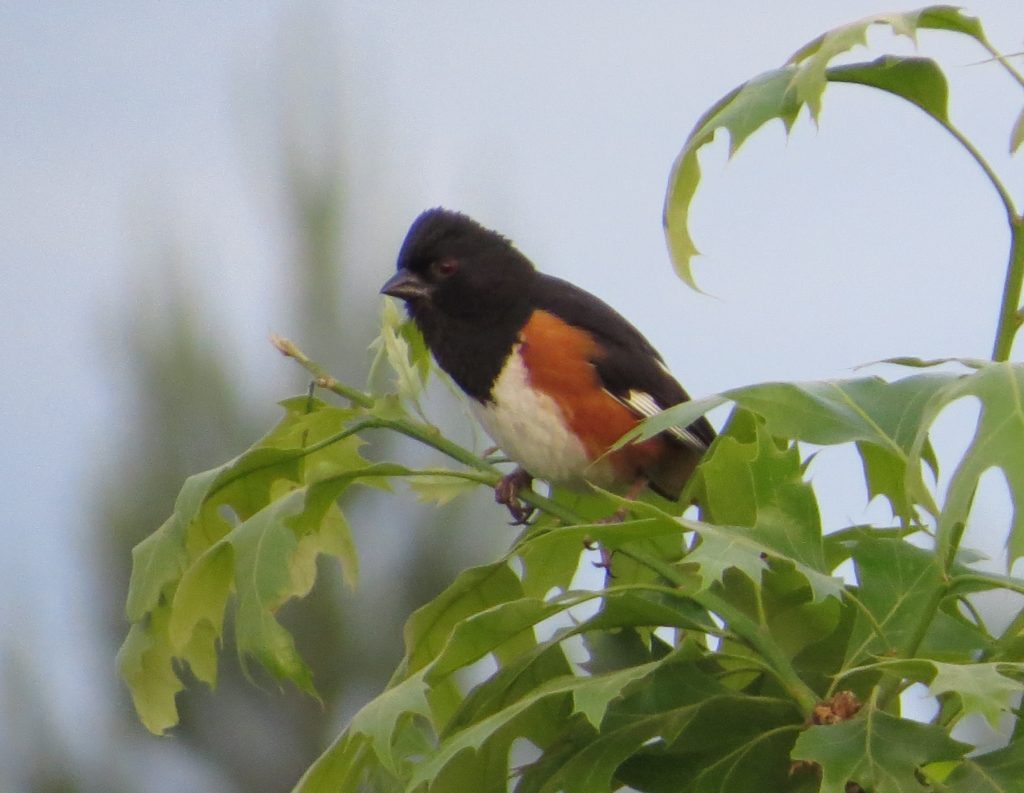
Birders like to say EATOs sound like they are saying “Drink your tea!” when they sing. This has been true in my very limited experience in Minnesota with this bird. But well-traveled birders know that birds in different geographical regions often have different dialects of the same song. I don’t know, maybe it’s just me, but in Wisconsin the Eastern Towhee sounded more like it was singing “Drink your beer!” Given how commonplace this bird was, it explains so much.
Another lifer for Tommy in Wisconsin that was surprisingly hard to track down was the Ruby-throated Hummingbird. Also surprising was that I had never before taken the time to photograph a male of our only, fairly common Hummingbird species. Luckily they had a feeder at Necedah National Wildlife Refuge with one lonely male showing up, allowing Tommy and me to rectify our respective deficits.
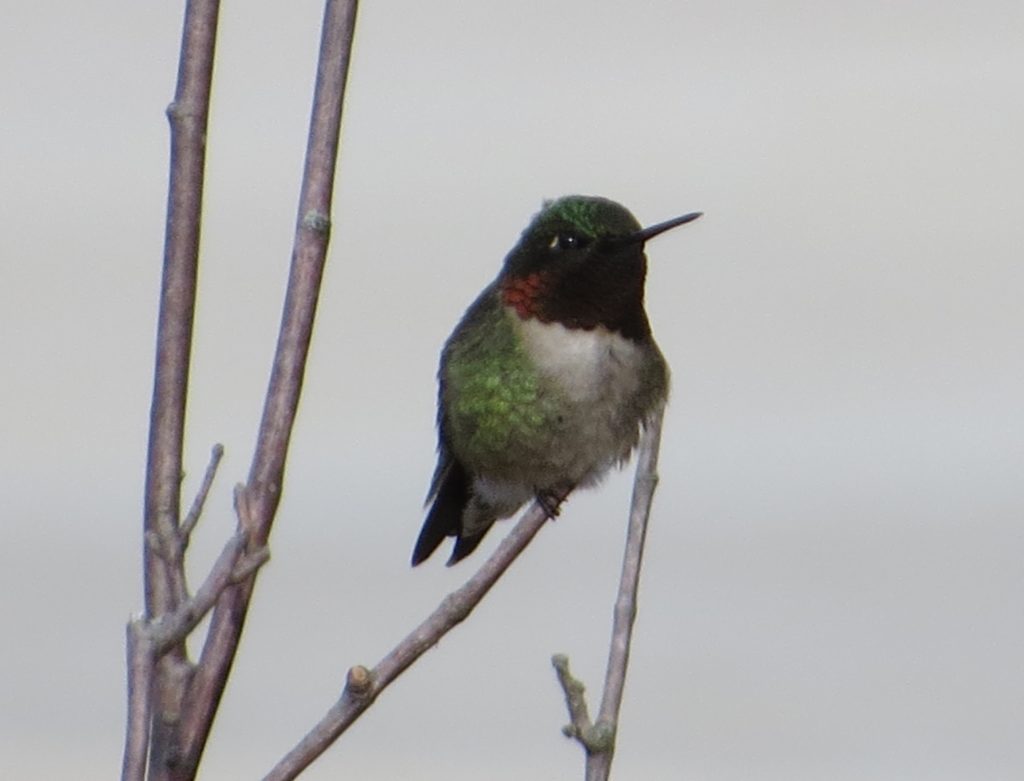
Another great find near the Visitors Center was a lifer Yellow-billed Cuckoo for Evan and me. Tommy found the bird for us which started as a heard-only bird and then eventually give us a quick fly-over sighting. It left me wanting more. Tommy always likes to “give back” something when he comes up birding. Last winter it was the Black-backed Woodpecker near my parents’ house that I had been wanting to see; this year it was the Cuckoo. So, thanks for the cool birds, Tommy!
Tommy Trip–Night Birding in the Minnesota River Valley
One night during Tommy’s stay, he and I ventured down to the Minnesota River Valley just east of Granite Falls for some night birding. Birding at night is always safer and more fun in good numbers, so we joined forces with Steve Gardner and Garrett Wee. Our prime target for the night was the Eastern Whip-poor-will. Tommy needed the lifer, and I was hoping to finally photograph one. Chippewa County Road 40 is probably the best place in the state to reliably find this bird. Despite Garrett already being down there before we arrived and having heard a half dozen of the Whips, the woods was completely silent when Steve, Tommy, and I got there. We birded on anyway and soon understood why the Whips weren’t whipping it good–a pair of Barred Owls vocalized right near us. We got amazing flashlight views as one soared just over our heads. It was eerie and awesome.
Eventually the Barred Owls disappeared, and the Whips began to sing their unending songs as they are so well known for. We never could get a visual unfortunately, but at least Tommy got to tally the bird for his life list. I also got to tally a new bird for my Minnesota list: a calling Yellow-billed Cuckoo in the dark! Even though Tommy had it directly above his head at one point, we never were able to get the flashlight on it. So the bird went from being a lifer to a state bird in a matter of two days but still left me unsatisfied.
Tommy Trip–Keeping it Local
For Tommy’s last full day of birding we decided to bird close to home even though two Minnesota Megas showed up that very day, a Baird’s Sparrow and a Calliope Hummingbird. A chase would have been fun but exhausting given all our recent travels. We started at Prairie Woods Environmental Learning Center. I had never really explored this place before, so it was fun to give it some serious attention. One of our highlights was yet another Scarlet Tanager. This one behaved like a proper Scarlet, hanging out exclusively in the canopy.
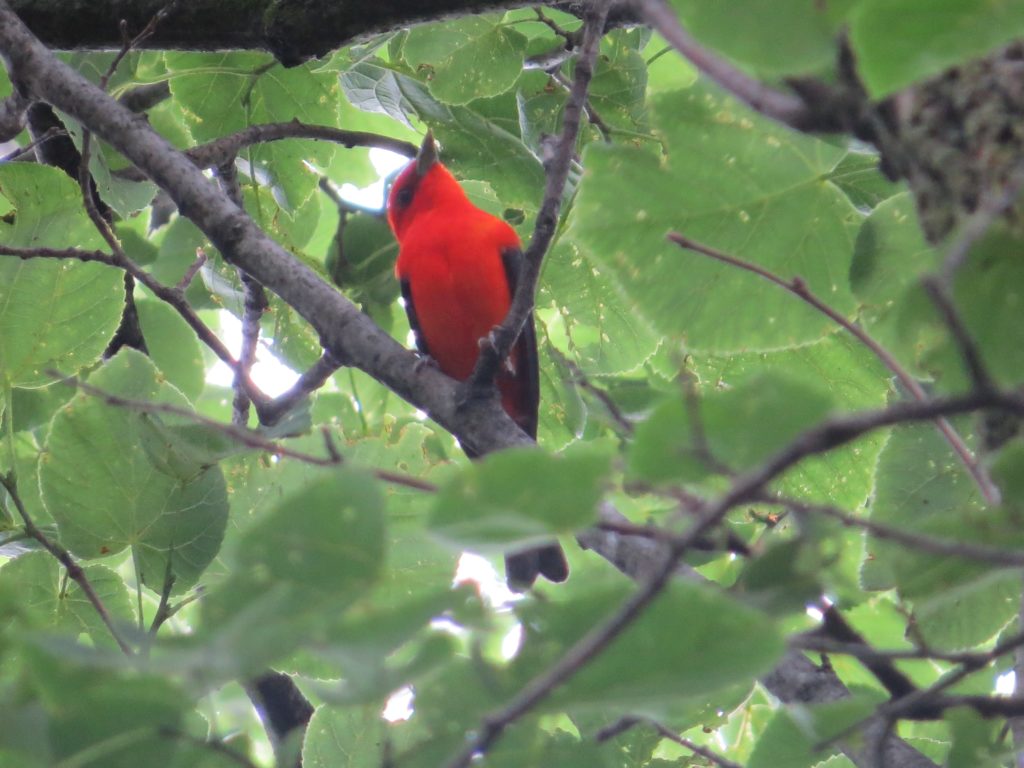 The other highlight was when Tommy picked out the sound of a calling Yellow-billed Cuckoo, a county bird for me! Once again, Tommy gives back! So in three successive days, this bird went from life bird to state bird to county bird. But it still was a no show. Someday.
The other highlight was when Tommy picked out the sound of a calling Yellow-billed Cuckoo, a county bird for me! Once again, Tommy gives back! So in three successive days, this bird went from life bird to state bird to county bird. But it still was a no show. Someday.
One of our other stops of the day was Sibley State Park. Despite this gem being so close to me, I haven’t given much time to explore it which is something I really need to resolve. Tommy and I gave it a good effort that day, though. It was fun to look at some common-place birds through Tommy’s fresh perspective. We took time to enjoy Ovenbirds, Field Sparrows, and Swamp Sparrows.
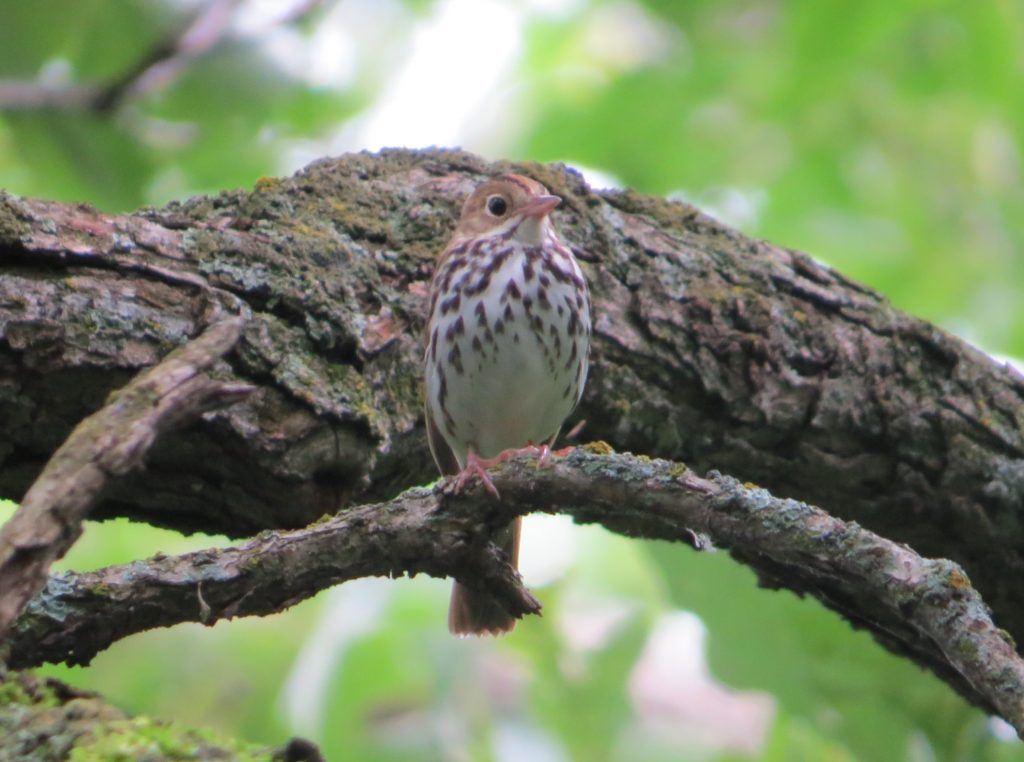
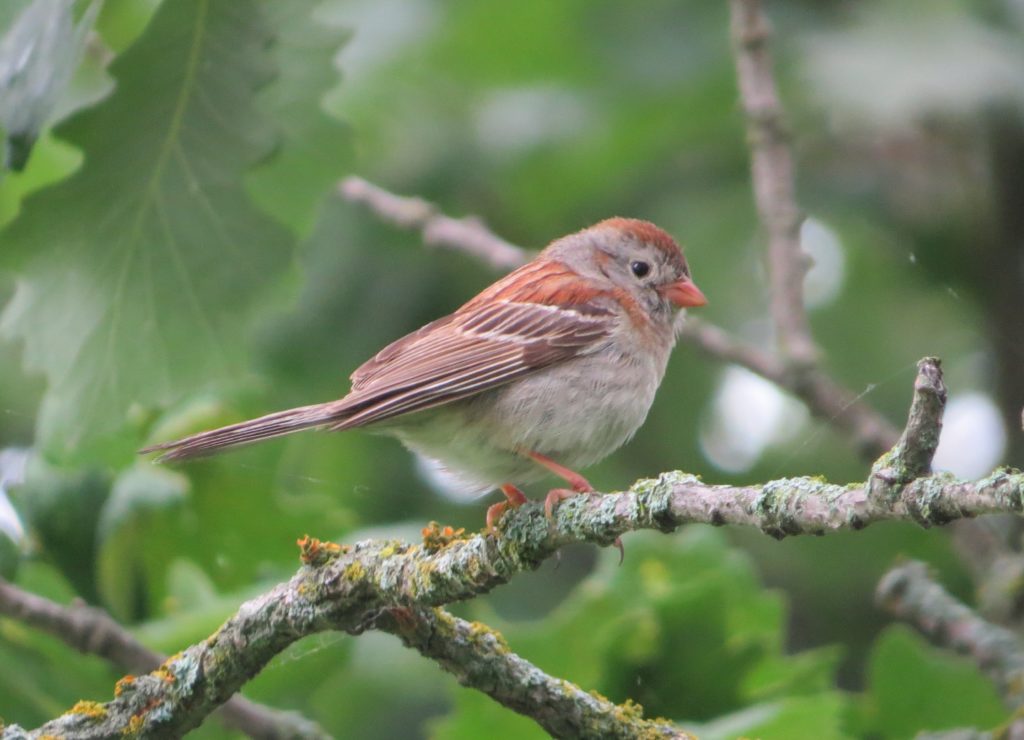
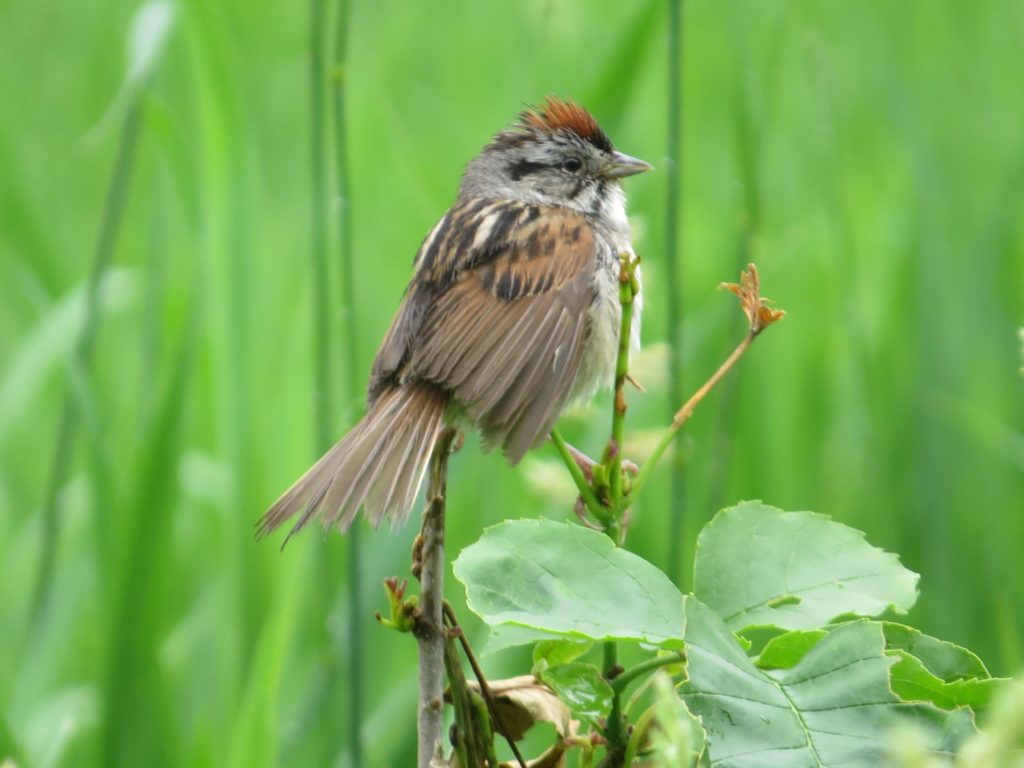
We also had a couple of good finds in the more uncommon species, like three additional Scarlet Tanagers…
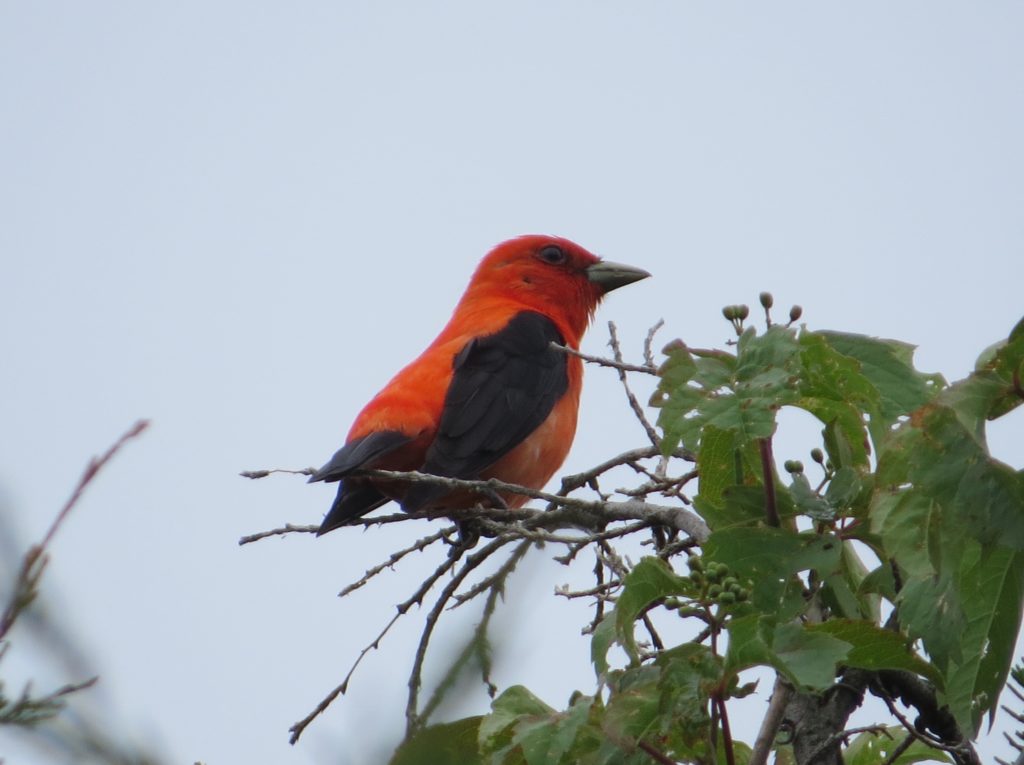 …and two Blue-winged Warblers, a very good bird for central Minnesota.
…and two Blue-winged Warblers, a very good bird for central Minnesota.
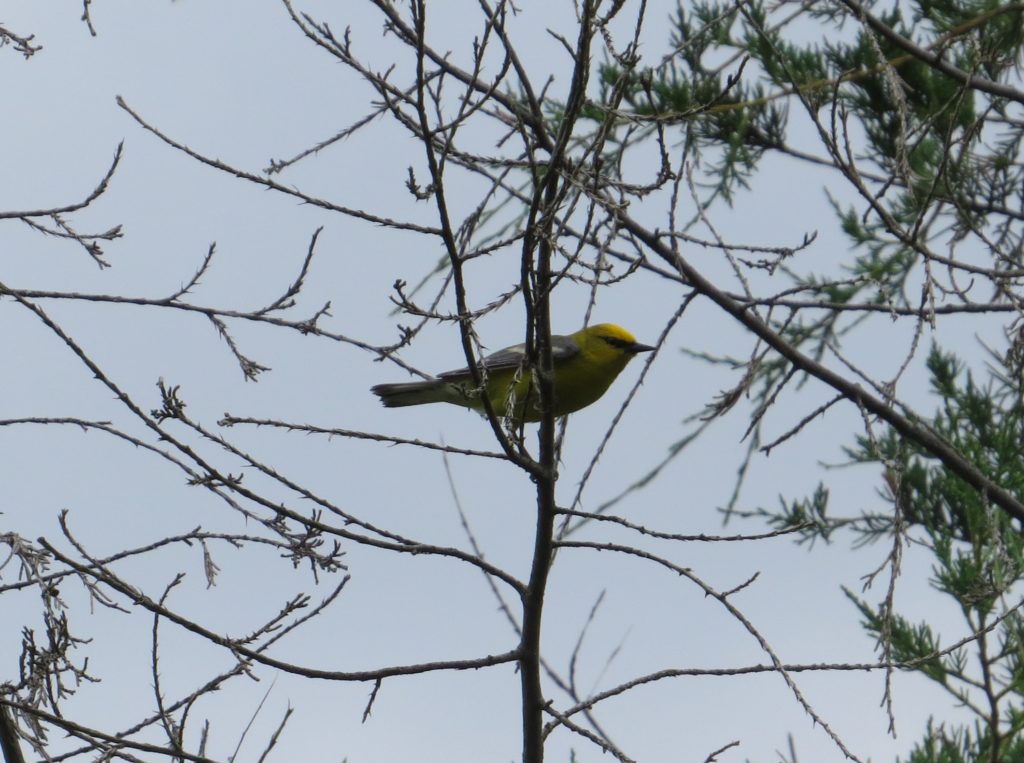
Birding After Tommy
After Tommy went home with a hefty bag of 26 lifers and a plethora of good bird sightings, I have continued to poke around close to home. The Dickcissels have invaded the state in good numbers this year. In fact, I even added one to my yard list.
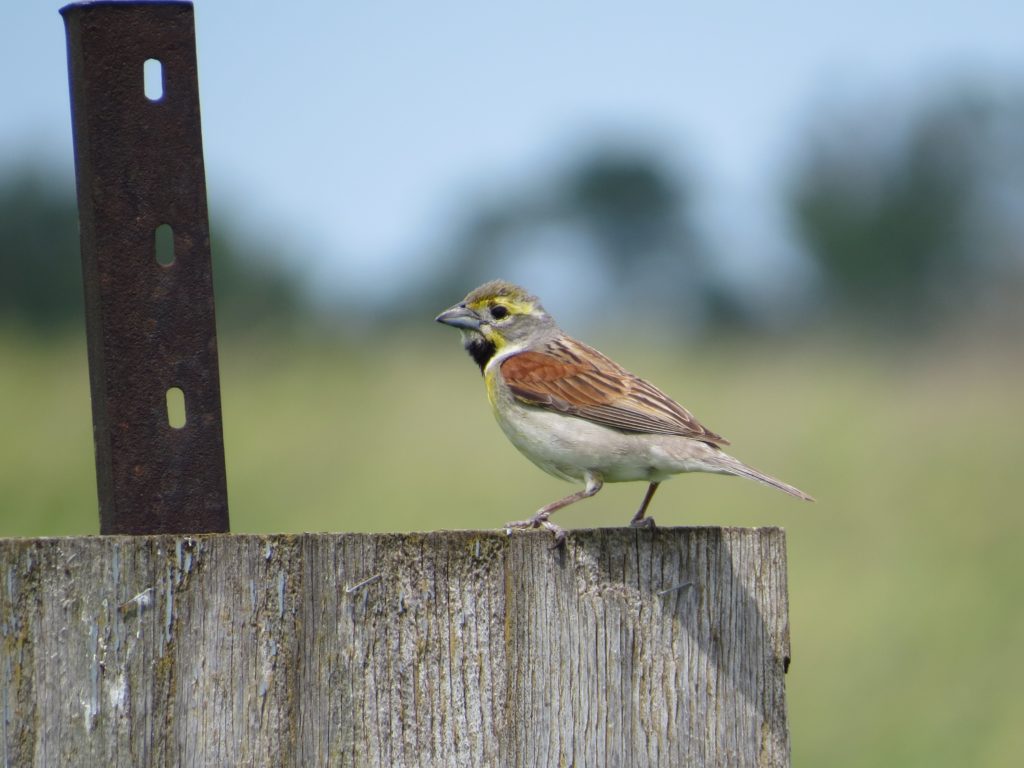 Another fun find I had one evening when I went out to a local wildlife management area was a completely unexpected county Least Bittern. Though I had a killer look at one flying toward me, I wasn’t able to get any photos but did record two Least Bitterns giving their “chuckling” call. You may have to turn up the volume.
Another fun find I had one evening when I went out to a local wildlife management area was a completely unexpected county Least Bittern. Though I had a killer look at one flying toward me, I wasn’t able to get any photos but did record two Least Bitterns giving their “chuckling” call. You may have to turn up the volume.
Birders can never turn off the birding. Even when I accompanied Evan to a Cub Scout camping weekend, I had a couple of fun finds. Highlights included yet another Scarlet Tanager and this Pine Warbler.
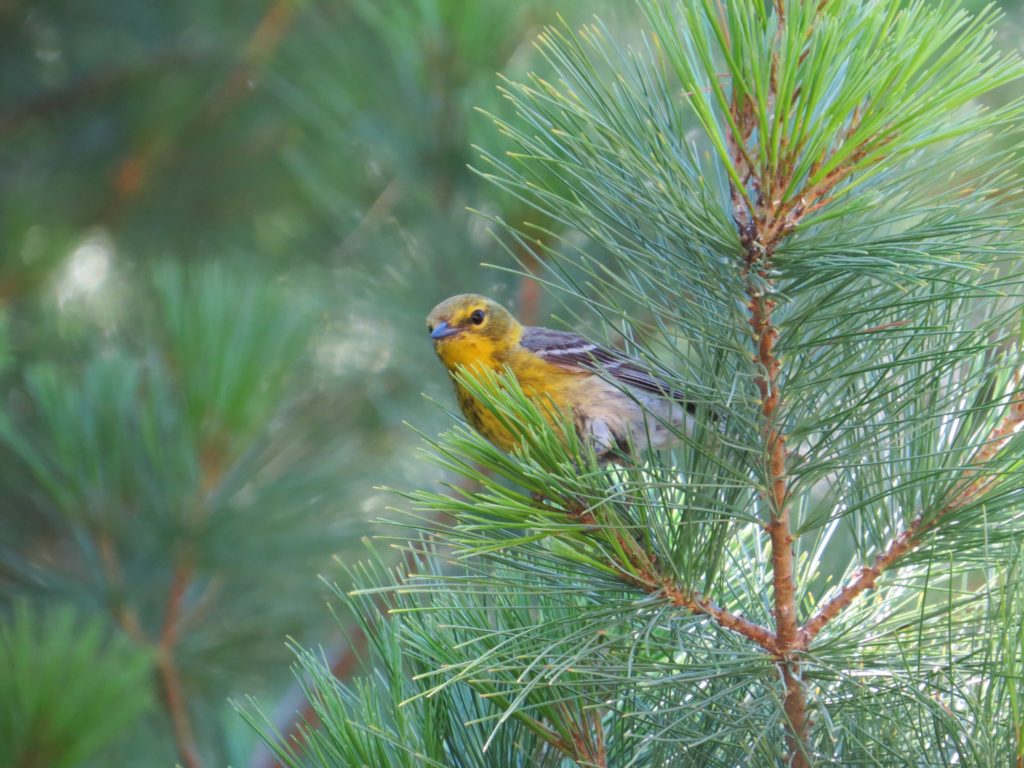
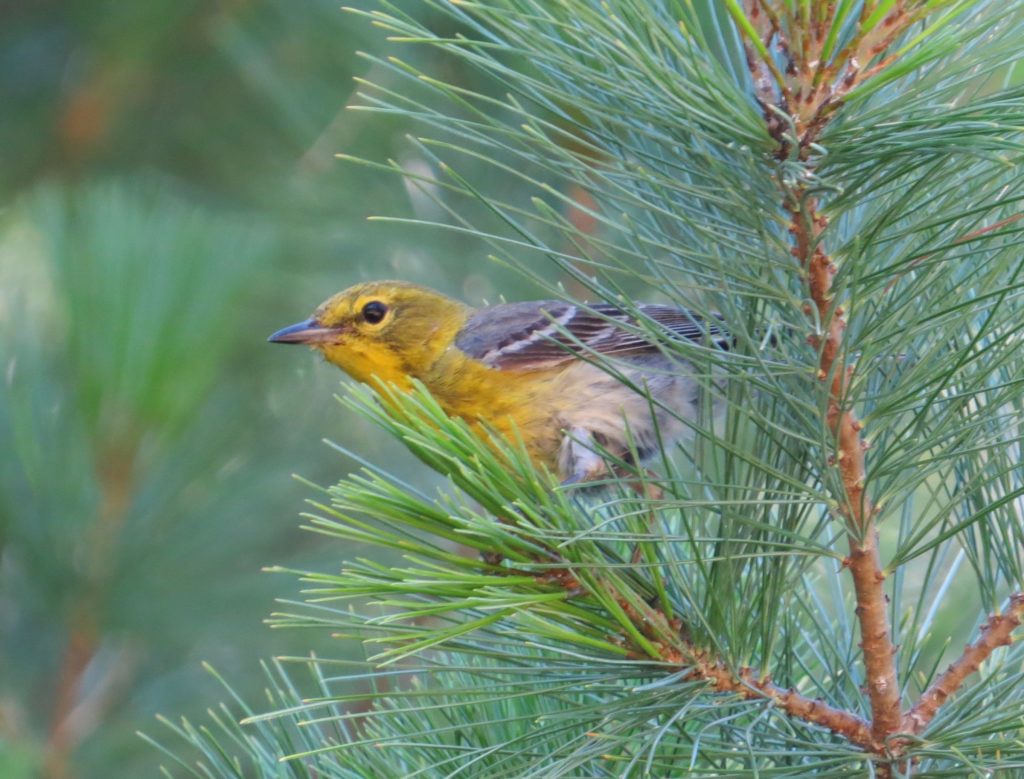
While the Pine Warbler was a good find this far south, I found something even better at Scout camp, probably my best sighting yet…
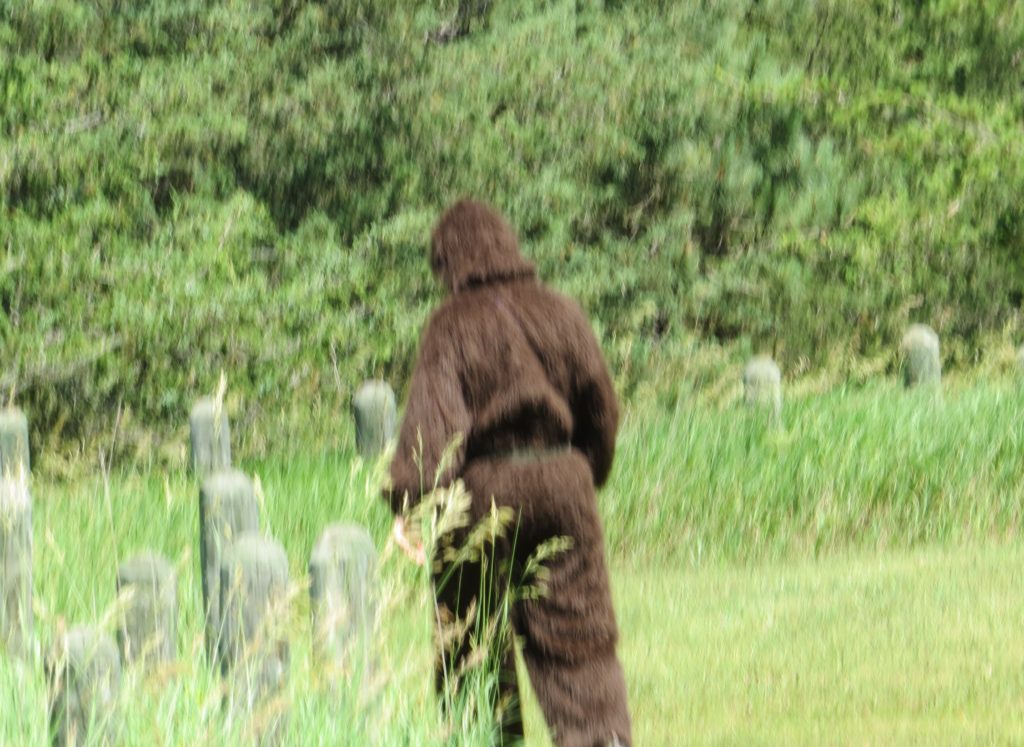
There are two more fun posts coming out soon–a chase to see a rare bird and an exciting Woodpecker encounter while visiting family in northern Minnesota over the 4th.

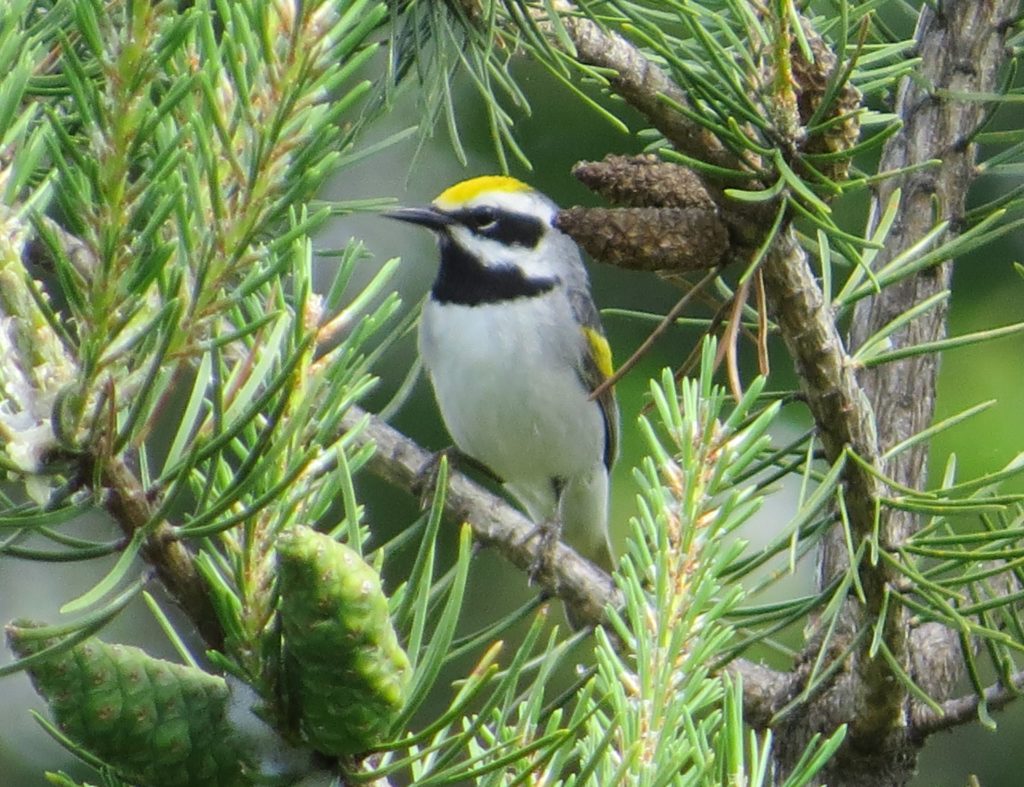 If Minnesota did not already claim (appropriately) the Common Loon as its state bird, the GWWA would make a fine choice. Minnesota plays host to roughly 50% of the world’s entire breeding population of this Warbler species. Wisconsin and Ontario are the other major stakeholders in rearing these birds. Maybe if most Wisconsinites knew this, they’d hold a referendum to denounce the Robin as their state bird and choose this Warbler instead.
If Minnesota did not already claim (appropriately) the Common Loon as its state bird, the GWWA would make a fine choice. Minnesota plays host to roughly 50% of the world’s entire breeding population of this Warbler species. Wisconsin and Ontario are the other major stakeholders in rearing these birds. Maybe if most Wisconsinites knew this, they’d hold a referendum to denounce the Robin as their state bird and choose this Warbler instead.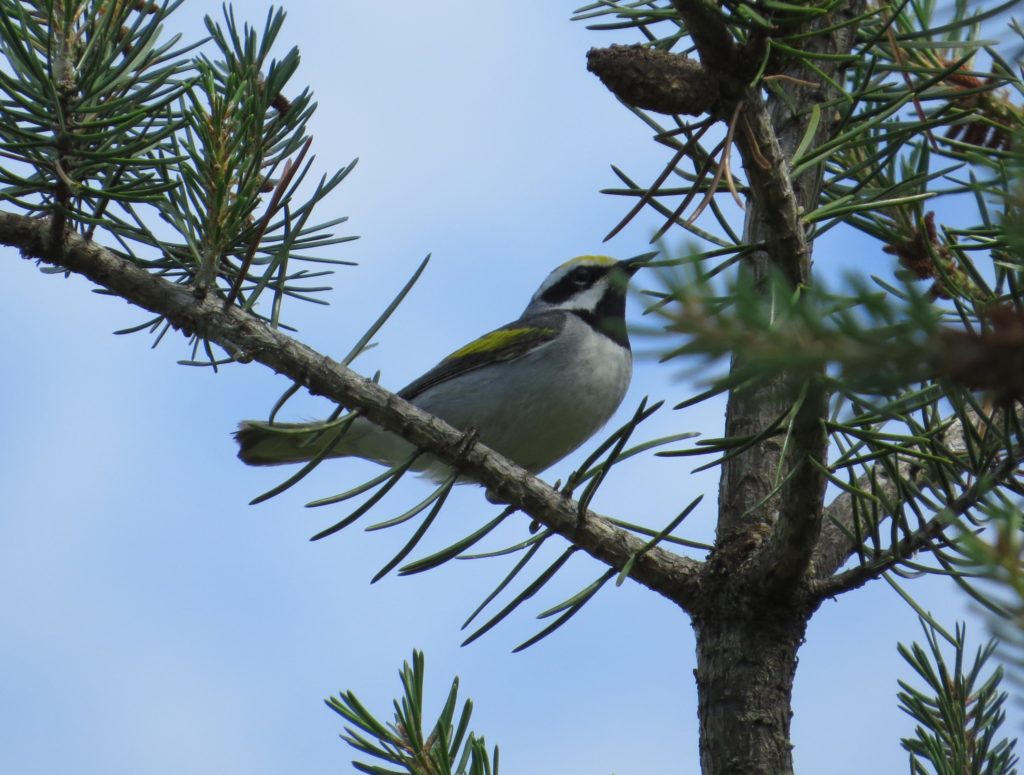 The Golden-wing’s preferred habitat is shrubby edges along wetlands and young forests. While the breeding population has remained stable in Minnesota over the last 45 years, this species has suffered a 60% population loss over that same time in the rest of its breeding range in North America. Even though Minnesota contains only 10% of the GWWA’s breeding range, we host nearly half of all the birds of this species. That puts an emphasis on just how much human development of wetlands and shrubby areas in other parts of the northeast has impacted this bird.
The Golden-wing’s preferred habitat is shrubby edges along wetlands and young forests. While the breeding population has remained stable in Minnesota over the last 45 years, this species has suffered a 60% population loss over that same time in the rest of its breeding range in North America. Even though Minnesota contains only 10% of the GWWA’s breeding range, we host nearly half of all the birds of this species. That puts an emphasis on just how much human development of wetlands and shrubby areas in other parts of the northeast has impacted this bird.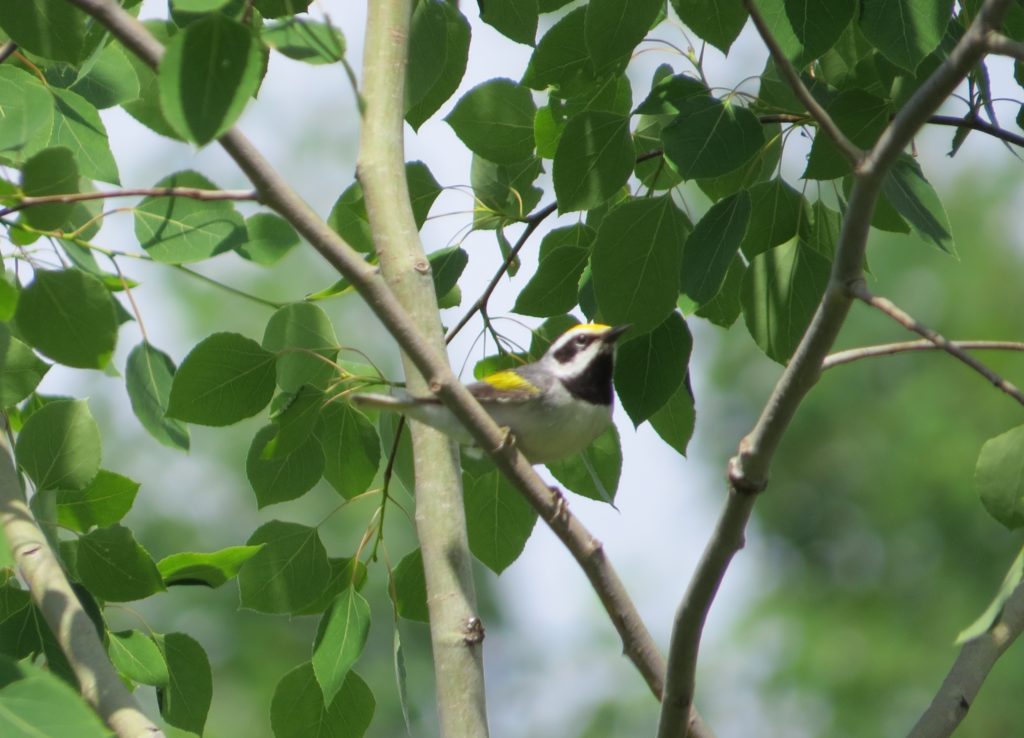 Besides human activity threatening this Warbler, the closely related Blue-winged Warbler is expanding its range in Minnesota. This is problematic because the more dominant Blue-wings prefer the same type of habitat.
Besides human activity threatening this Warbler, the closely related Blue-winged Warbler is expanding its range in Minnesota. This is problematic because the more dominant Blue-wings prefer the same type of habitat.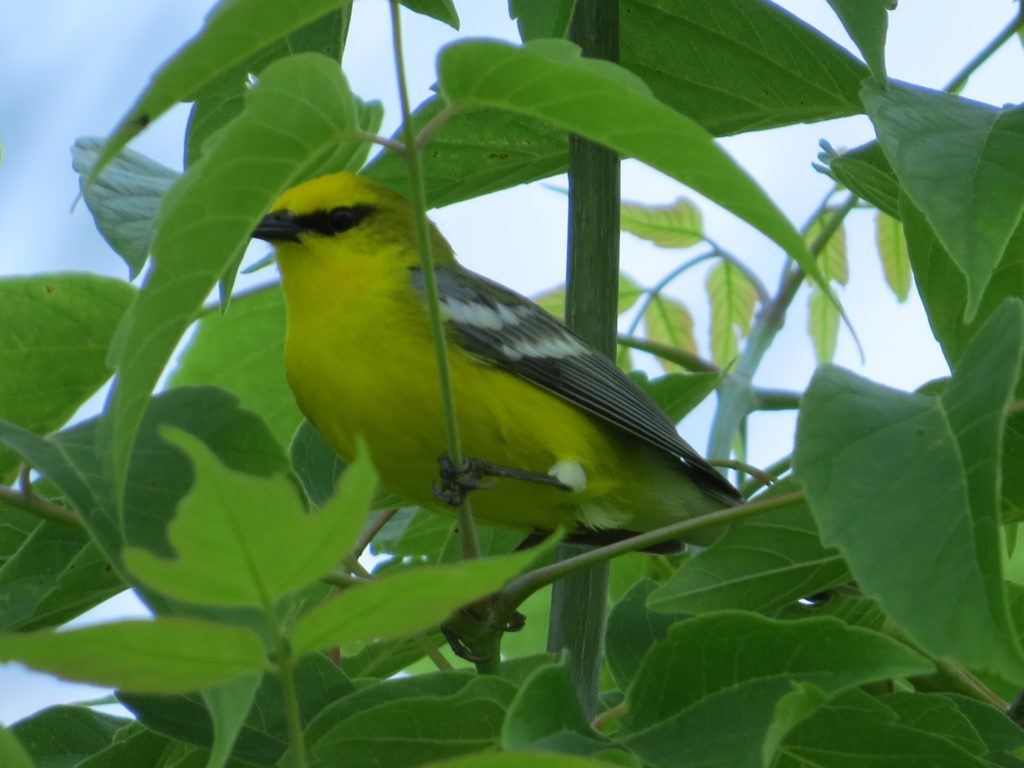 And when the Blue-wings aren’t kicking out the Golden-wings, they are hybridizing with them. I have yet to see one of the two main hybrids.
And when the Blue-wings aren’t kicking out the Golden-wings, they are hybridizing with them. I have yet to see one of the two main hybrids.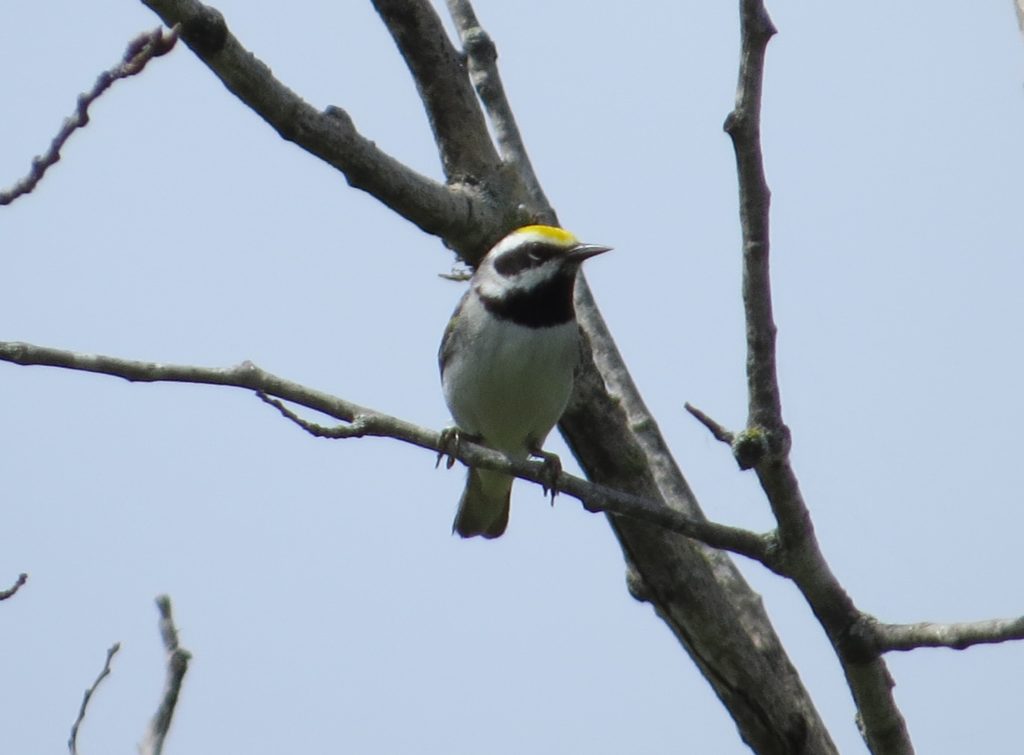 Like the Cerulean Warbler, the Golden-winged Warbler also winters in Central and South America, thriving in shade-grown coffee plantations. Again, another reminder to drink bird-friendly coffee. This beautiful home-grown bird is truly a treasure that needs all the help it can get.
Like the Cerulean Warbler, the Golden-winged Warbler also winters in Central and South America, thriving in shade-grown coffee plantations. Again, another reminder to drink bird-friendly coffee. This beautiful home-grown bird is truly a treasure that needs all the help it can get.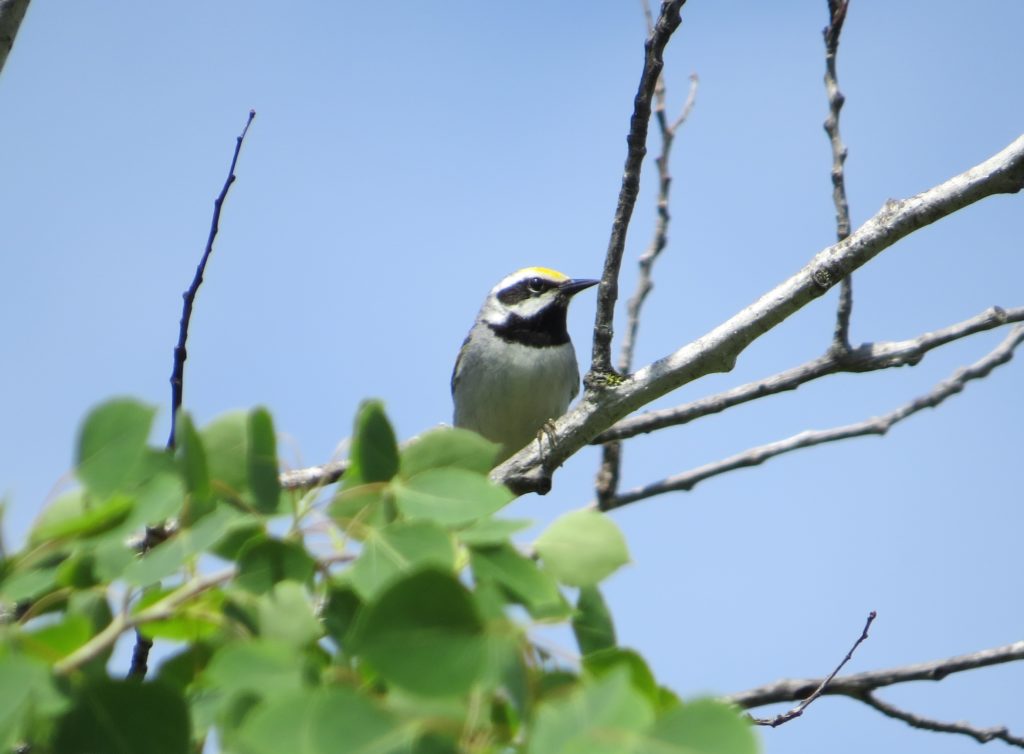 Knowing how fragile a species is makes you appreciate a sighting like ours all the more. Hopefully the Golden-winged Warbler has a bright future.
Knowing how fragile a species is makes you appreciate a sighting like ours all the more. Hopefully the Golden-winged Warbler has a bright future.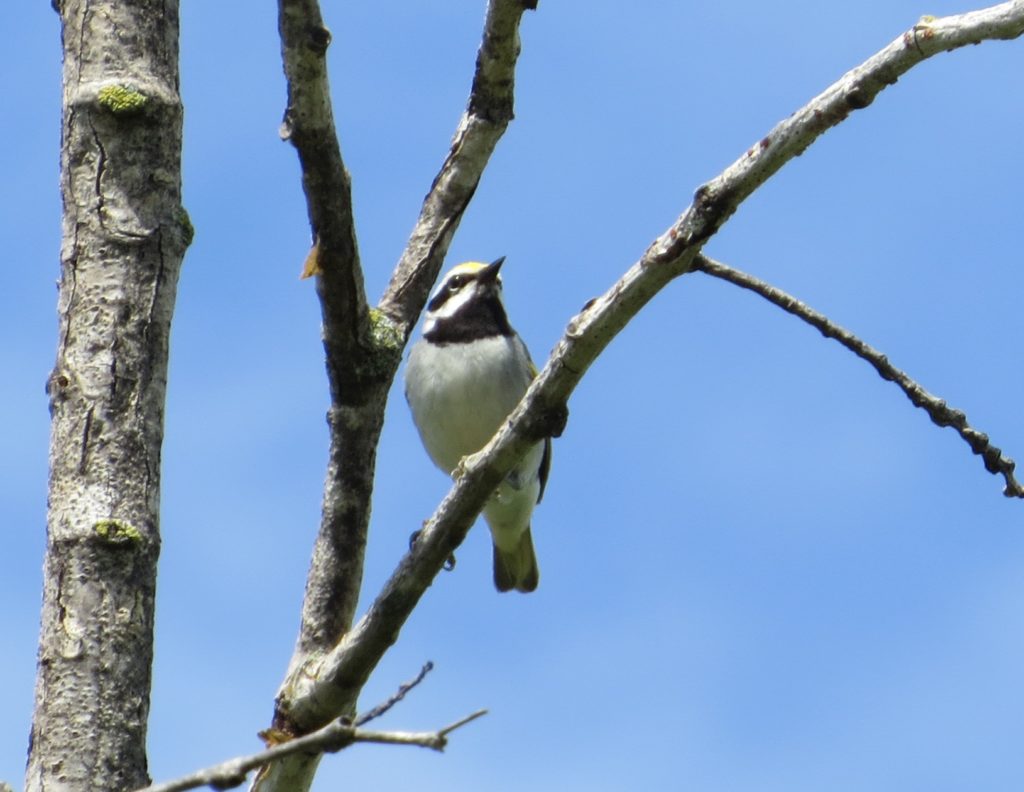
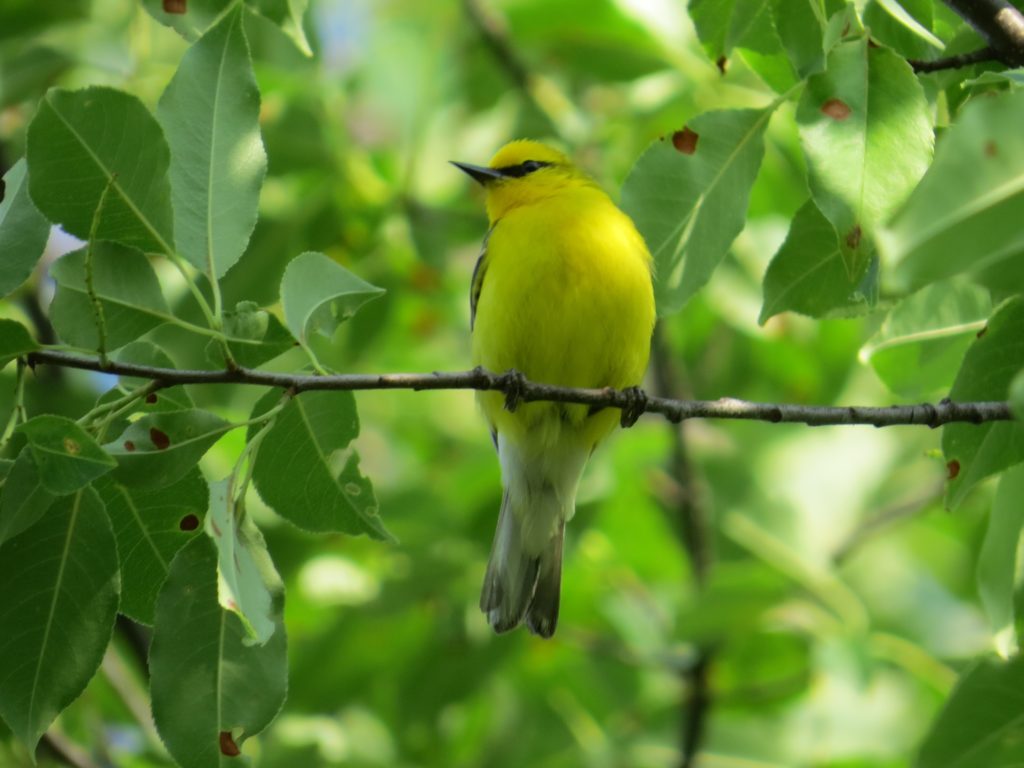
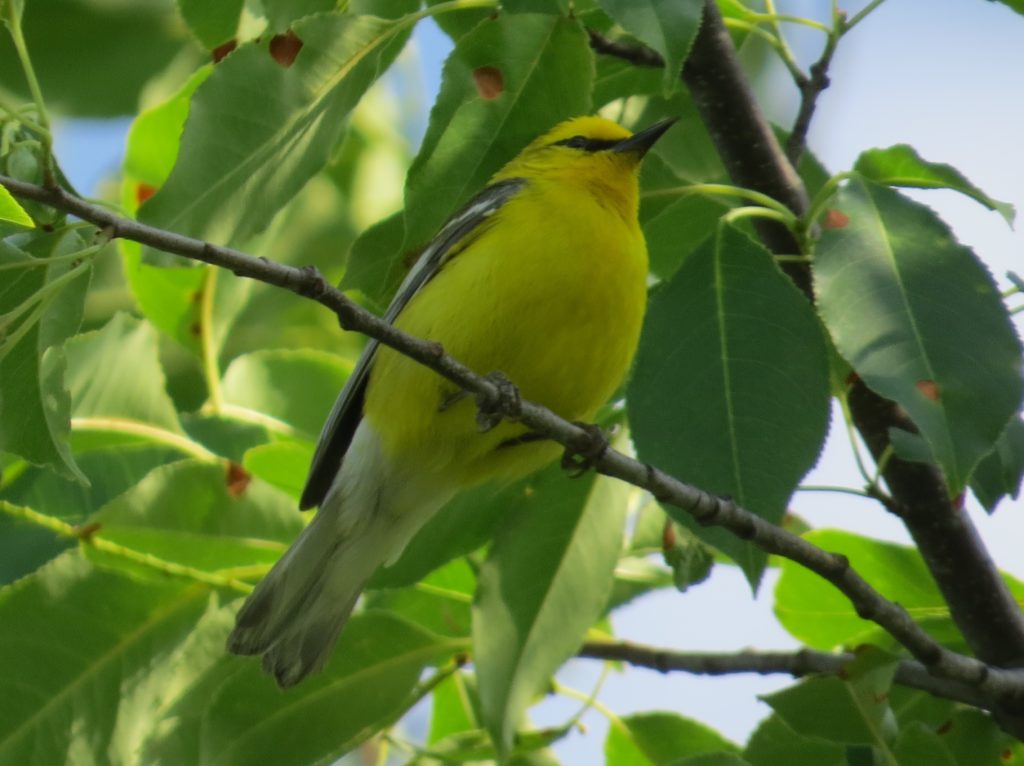 We were after one of the most coveted and beautiful Warblers there is–the Cerulean Warbler. This is one of my all-time favorite birds. This individual was only the fourth one I’ve ever seen; it’s one of those birds that makes you feel like you are lifering all over again when you see it, it’s that cool. This bird is so rare, beautiful, and cooperative–no apologies on this photo dump.
We were after one of the most coveted and beautiful Warblers there is–the Cerulean Warbler. This is one of my all-time favorite birds. This individual was only the fourth one I’ve ever seen; it’s one of those birds that makes you feel like you are lifering all over again when you see it, it’s that cool. This bird is so rare, beautiful, and cooperative–no apologies on this photo dump.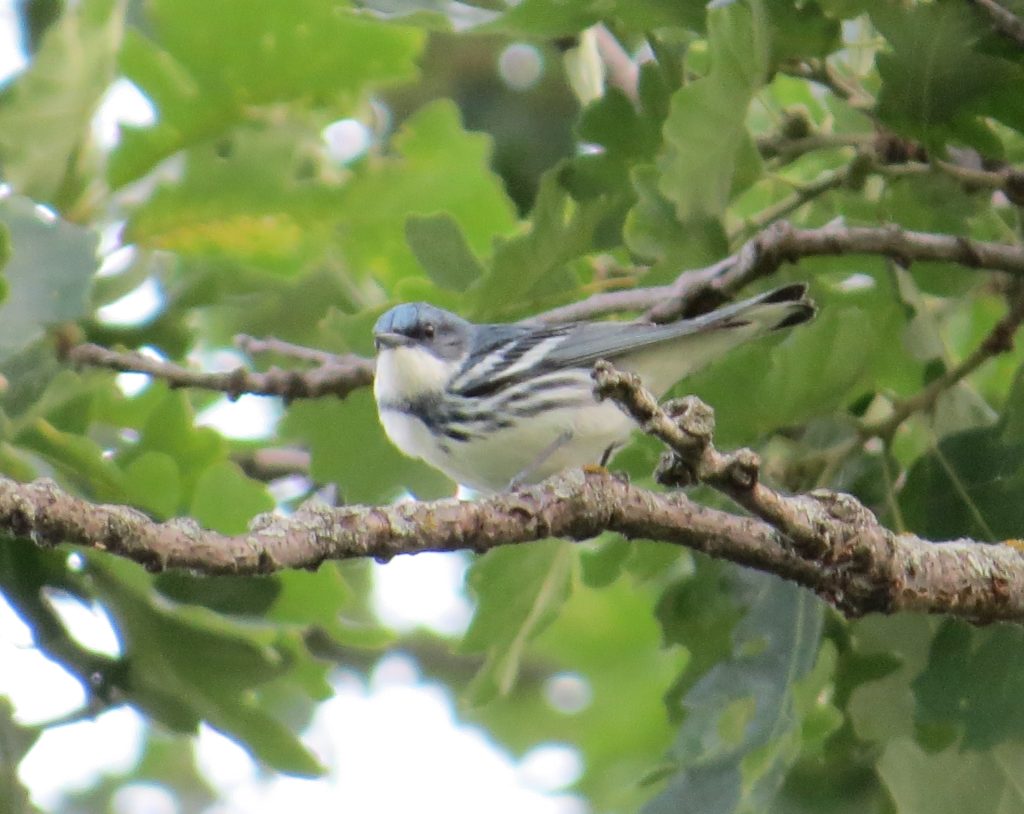
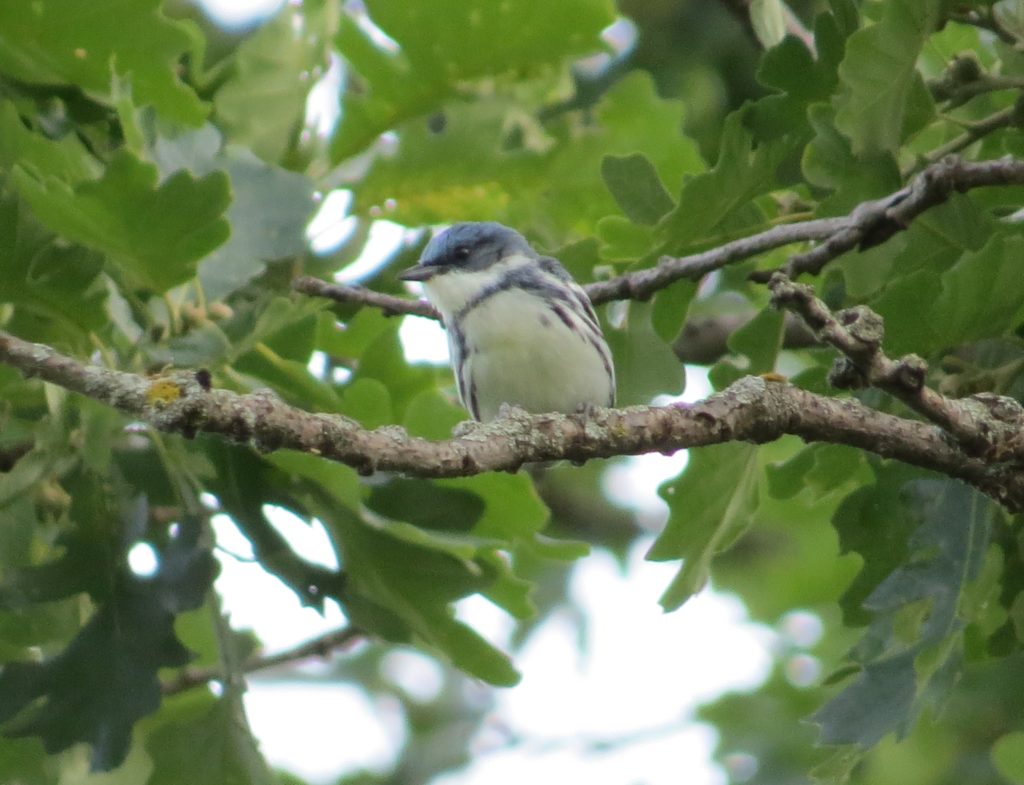
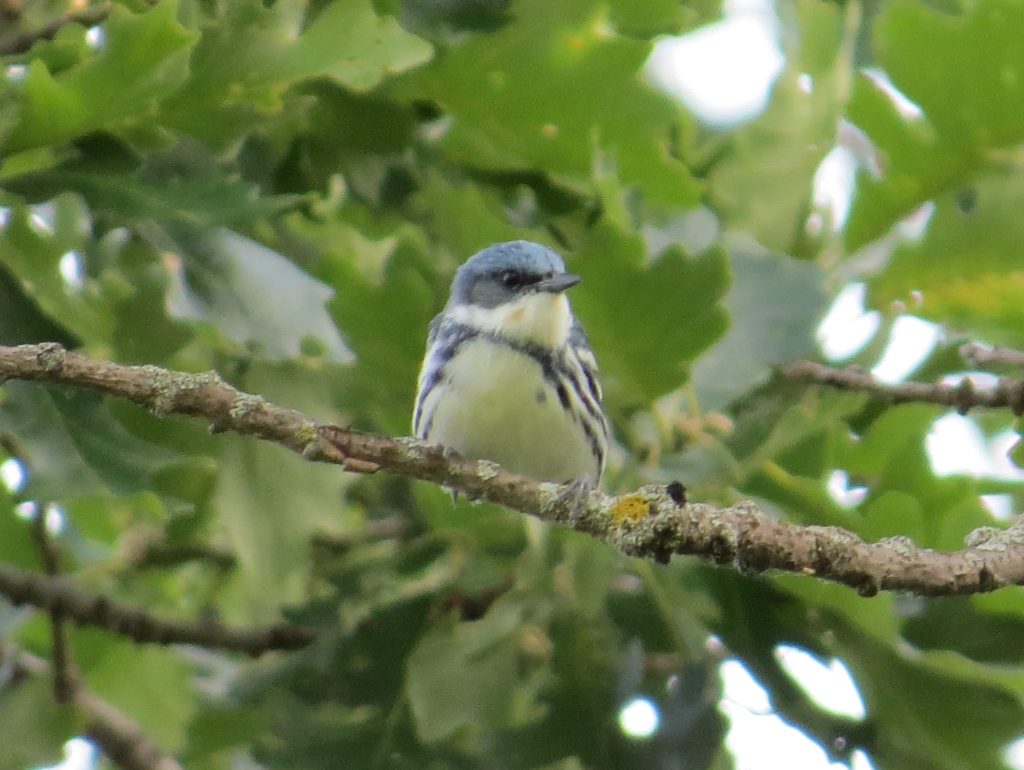
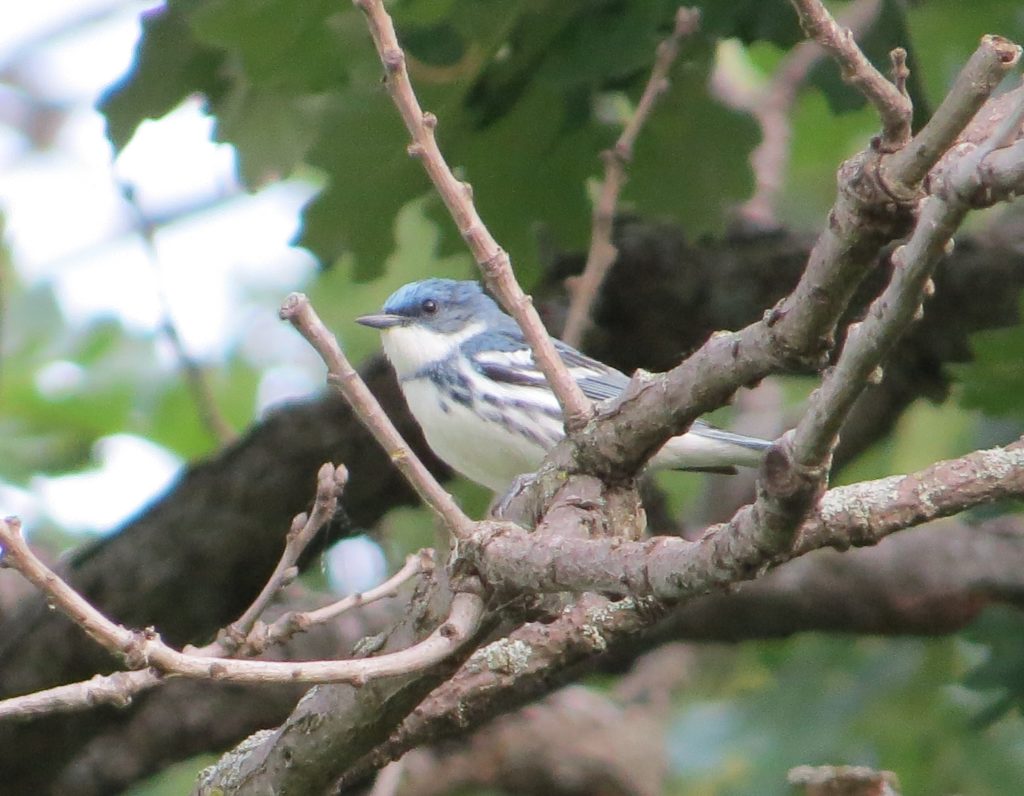
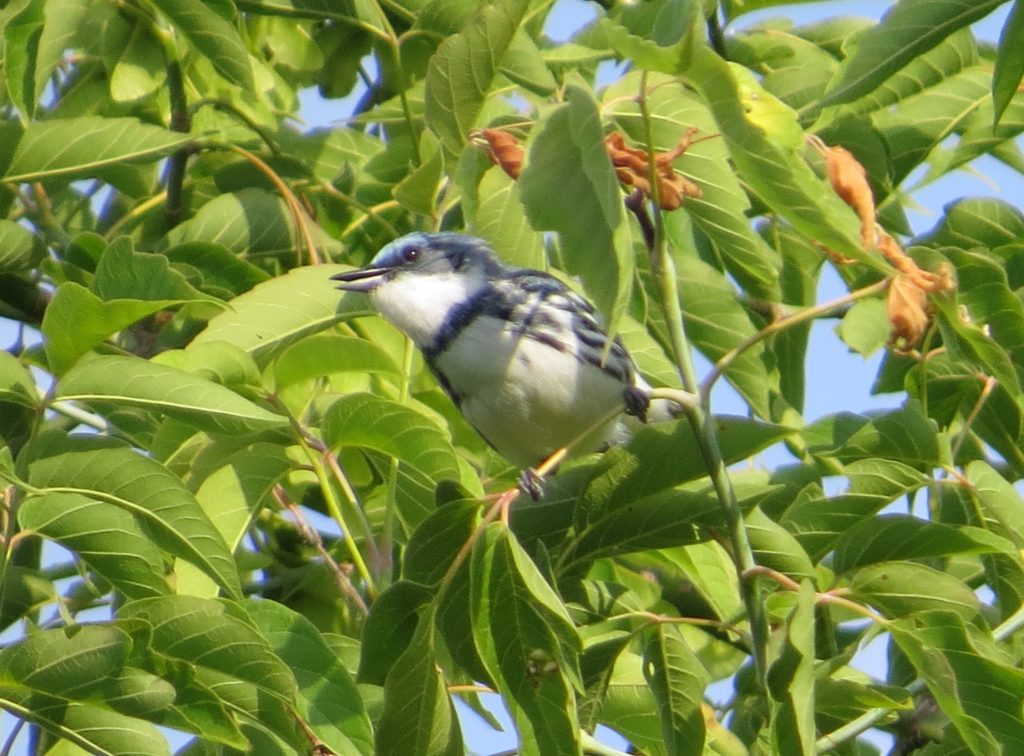 The Cerulean Warbler is in trouble because of habitat loss in its summer home in North America and its winter home in South America. It prefers mature deciduous woods that offer a relatively open understory. Much of their historical breeding grounds in the U.S. have been lost to farms, cities, and suburbs. On their wintering grounds, much of the tropical forest has been converted to farms. While Ceruleans will use shade-grown coffee plantations, they will not use the more popular and efficient sun-grown coffee plantations. Seeing one of these birds is always a reminder of how fragile a species can be and how easily we can wipe a species off the map. It’s also a personal reminder that I really should be drinking bird-friendly, shade-grown coffee–it’s the least I can do. Seeing or even hearing a Cerulean is always a special treat. Seeing one well like this and watching a friend lifer on it is even better. And observing a Cerulean Warbler perched against a cerulean sky? Priceless.
The Cerulean Warbler is in trouble because of habitat loss in its summer home in North America and its winter home in South America. It prefers mature deciduous woods that offer a relatively open understory. Much of their historical breeding grounds in the U.S. have been lost to farms, cities, and suburbs. On their wintering grounds, much of the tropical forest has been converted to farms. While Ceruleans will use shade-grown coffee plantations, they will not use the more popular and efficient sun-grown coffee plantations. Seeing one of these birds is always a reminder of how fragile a species can be and how easily we can wipe a species off the map. It’s also a personal reminder that I really should be drinking bird-friendly, shade-grown coffee–it’s the least I can do. Seeing or even hearing a Cerulean is always a special treat. Seeing one well like this and watching a friend lifer on it is even better. And observing a Cerulean Warbler perched against a cerulean sky? Priceless.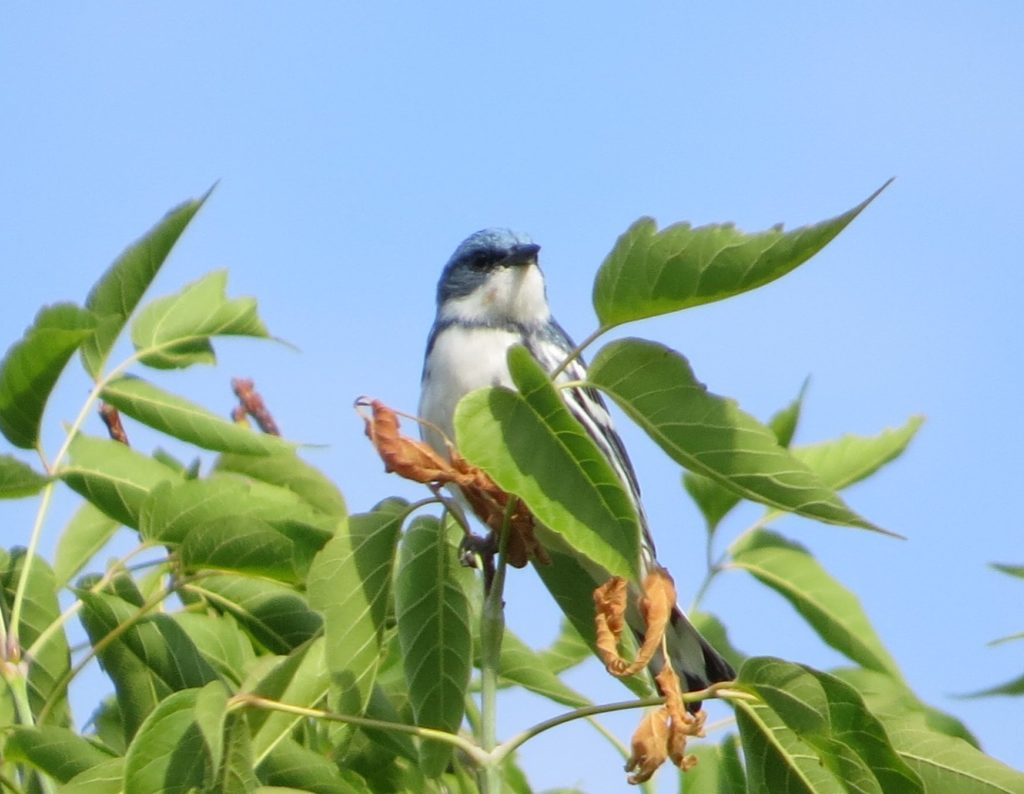
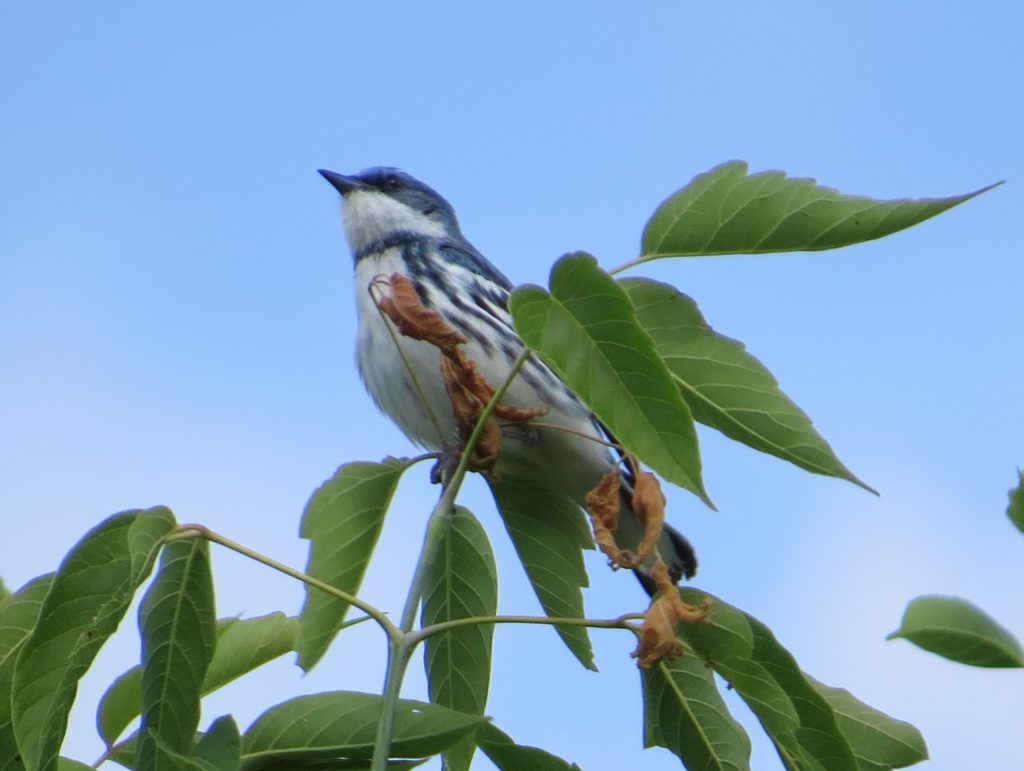 Coming up: a hefty, quick trip to Wisconsin for some unrivaled birds, CEWA notwithstanding.
Coming up: a hefty, quick trip to Wisconsin for some unrivaled birds, CEWA notwithstanding.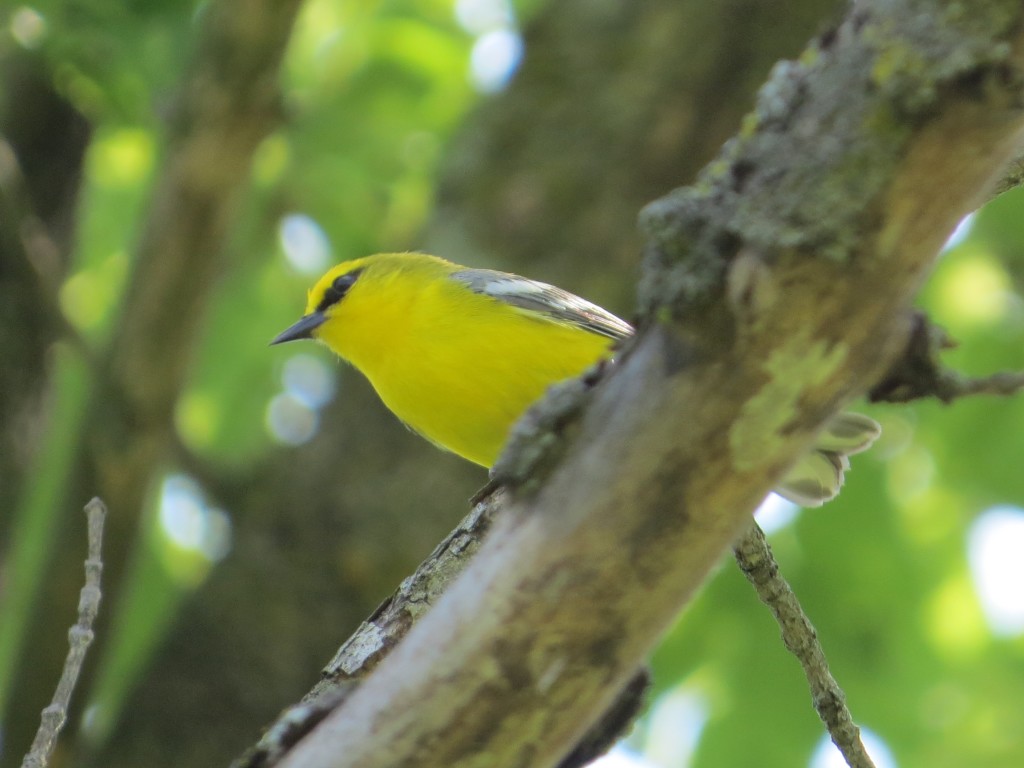 Once we hiked through the prairie habitat and into the woods, we walked along a trail on glacial ridge where the slopes quickly became quite steep on each side of the trail. Thanks to some great insights from Washington County birding guru, Pete Nichols, we cut down one of these slopes on a goat path of sorts to reach the creek in the ravine below. This was the promised land for BOTH the Louisiana Waterthrush and the Acadian Flycatcher. It did not take long for us to hear the sharp “Pit-se!” call of our shared Acadian lifer. Arriving at the creek bottom, Tommy instantly pointed out the chip note of the Louisiana Waterthrush, which had the honor of being my 400th life bird. The bird showed well for us but would not sit still. Its song was beautiful as it rang through the ravine.
Once we hiked through the prairie habitat and into the woods, we walked along a trail on glacial ridge where the slopes quickly became quite steep on each side of the trail. Thanks to some great insights from Washington County birding guru, Pete Nichols, we cut down one of these slopes on a goat path of sorts to reach the creek in the ravine below. This was the promised land for BOTH the Louisiana Waterthrush and the Acadian Flycatcher. It did not take long for us to hear the sharp “Pit-se!” call of our shared Acadian lifer. Arriving at the creek bottom, Tommy instantly pointed out the chip note of the Louisiana Waterthrush, which had the honor of being my 400th life bird. The bird showed well for us but would not sit still. Its song was beautiful as it rang through the ravine.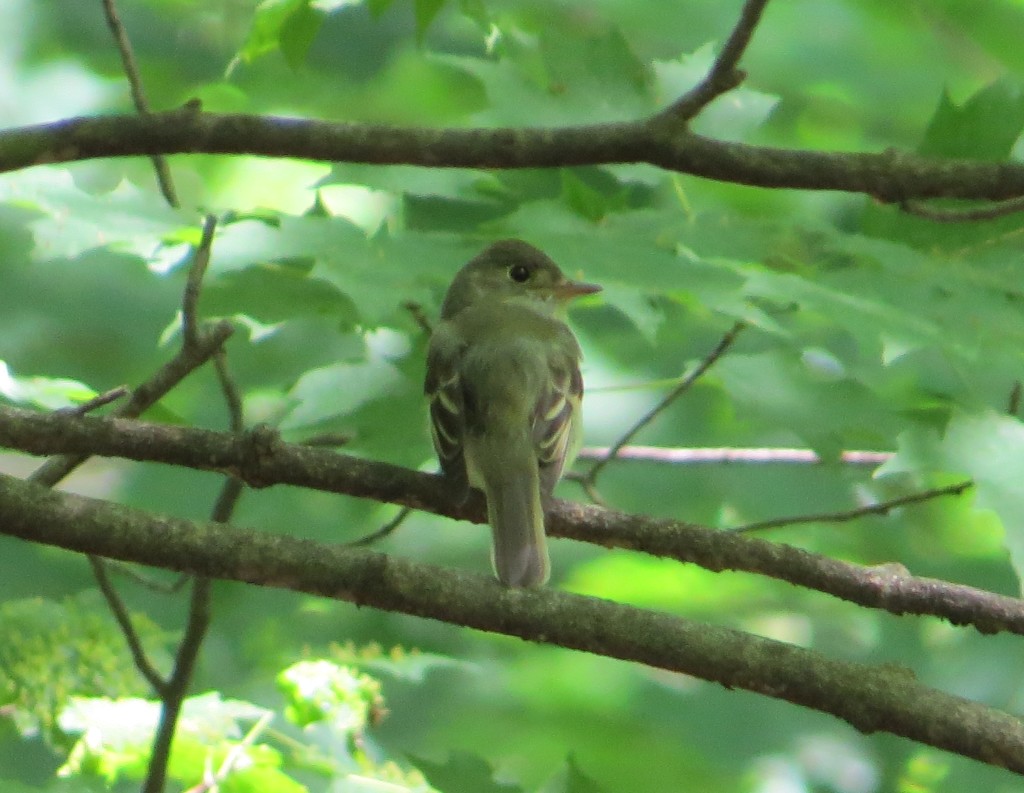 Confession: I’m starting to really like the Empids, at least the eastern ones. Though the five are difficult to differentiate visually, their unique habitat choices and equally unique songs make identification a lot easier than I once thought. Hearing this Acadian Flycatcher was much more fun than just seeing it.
Confession: I’m starting to really like the Empids, at least the eastern ones. Though the five are difficult to differentiate visually, their unique habitat choices and equally unique songs make identification a lot easier than I once thought. Hearing this Acadian Flycatcher was much more fun than just seeing it.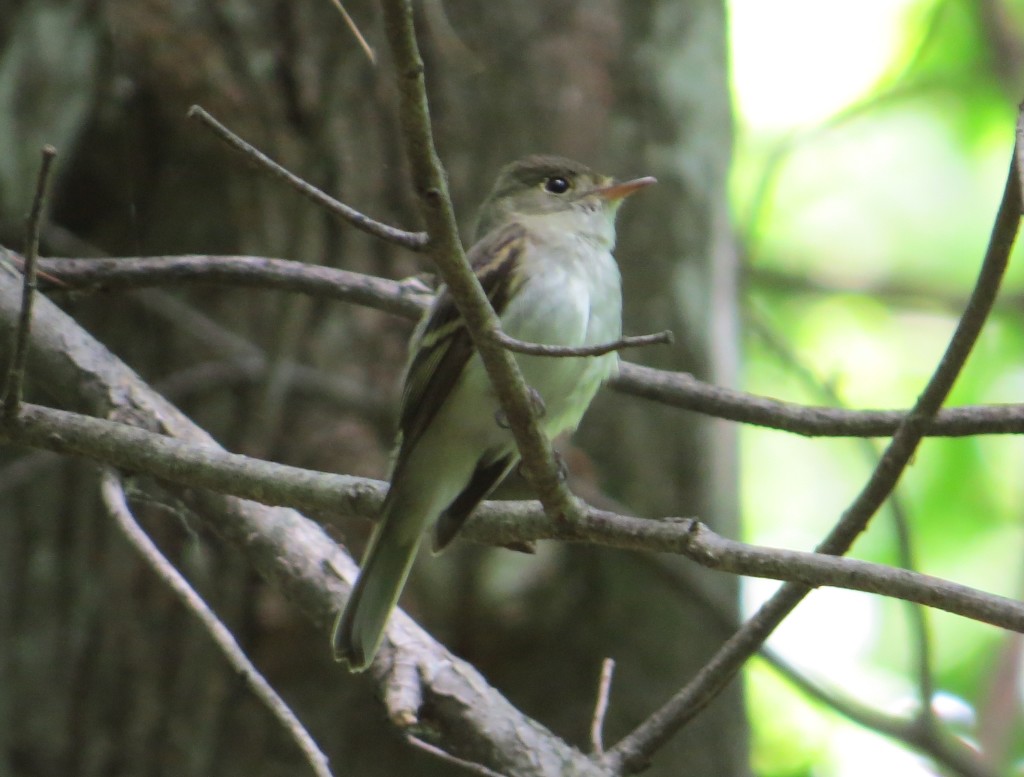 An equal auditory delight was the Louisiana Waterthrush. It was loud. We had at least two different birds. This one below put on an impressive spinning and tail-bobbing display on this log right in front of us.
An equal auditory delight was the Louisiana Waterthrush. It was loud. We had at least two different birds. This one below put on an impressive spinning and tail-bobbing display on this log right in front of us.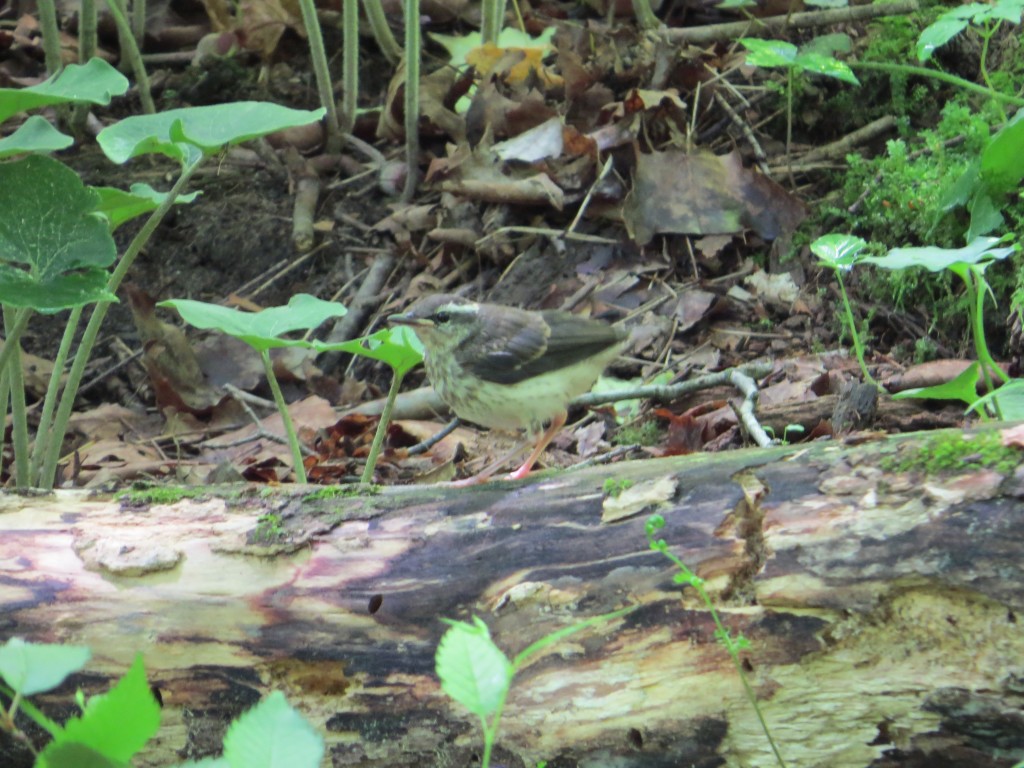
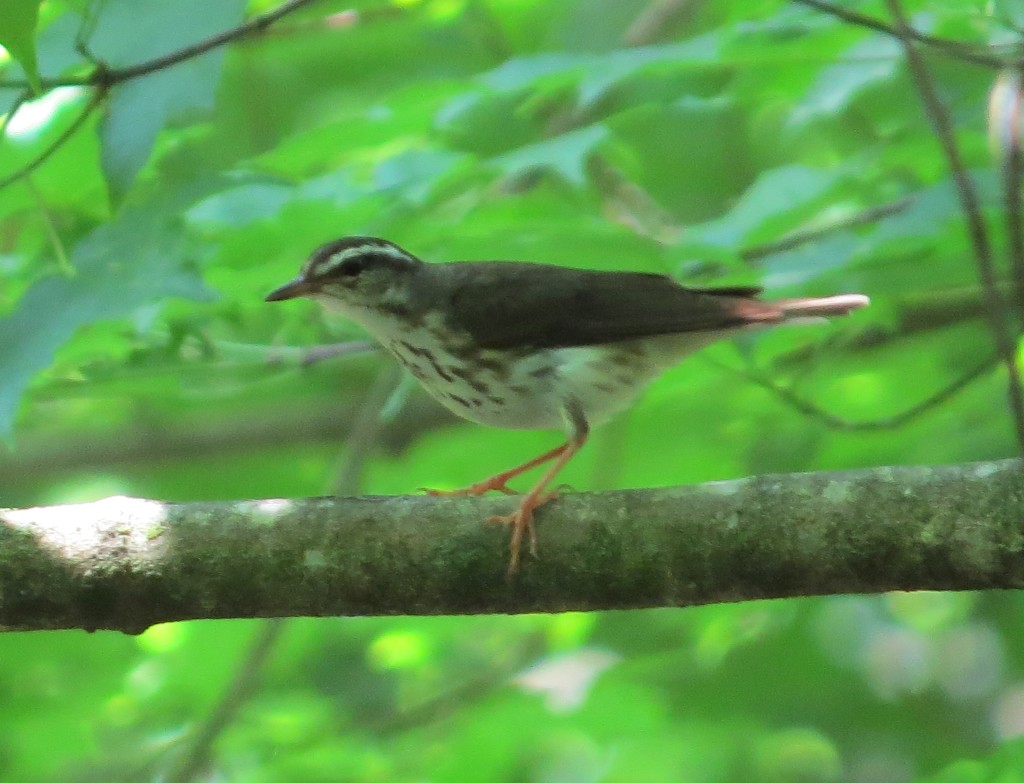 Tommy and I became absorbed in our separate pursuits spending more time than we anticipated in our searches. Is that a Scarlet Tanager? Nope, just a super content Evan who kept busy the entire time playing in the creek. Good thing he wore his water boots.
Tommy and I became absorbed in our separate pursuits spending more time than we anticipated in our searches. Is that a Scarlet Tanager? Nope, just a super content Evan who kept busy the entire time playing in the creek. Good thing he wore his water boots.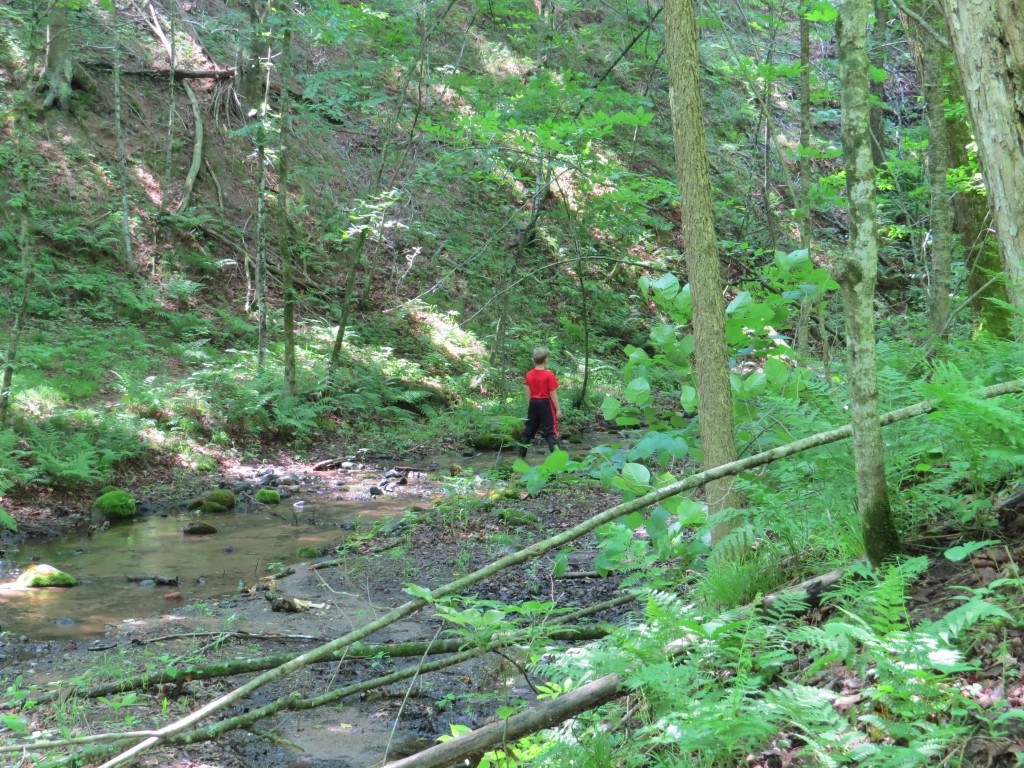
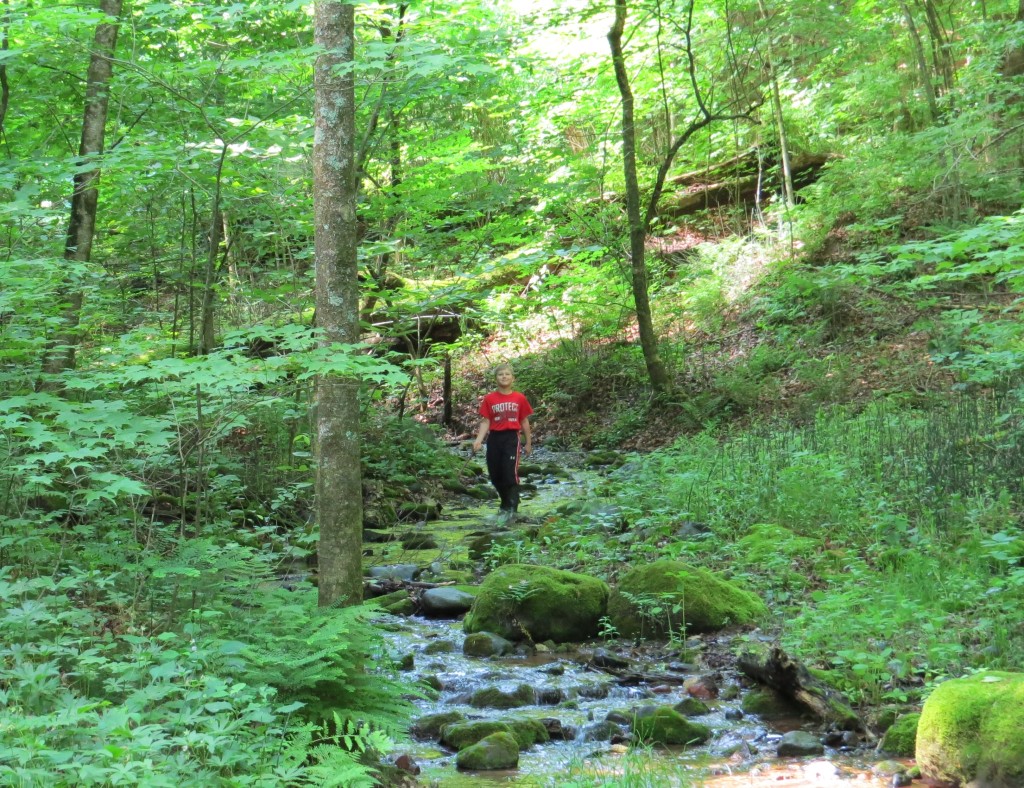 Another lifer for Tommy that we both enjoyed up close was the Veery.
Another lifer for Tommy that we both enjoyed up close was the Veery.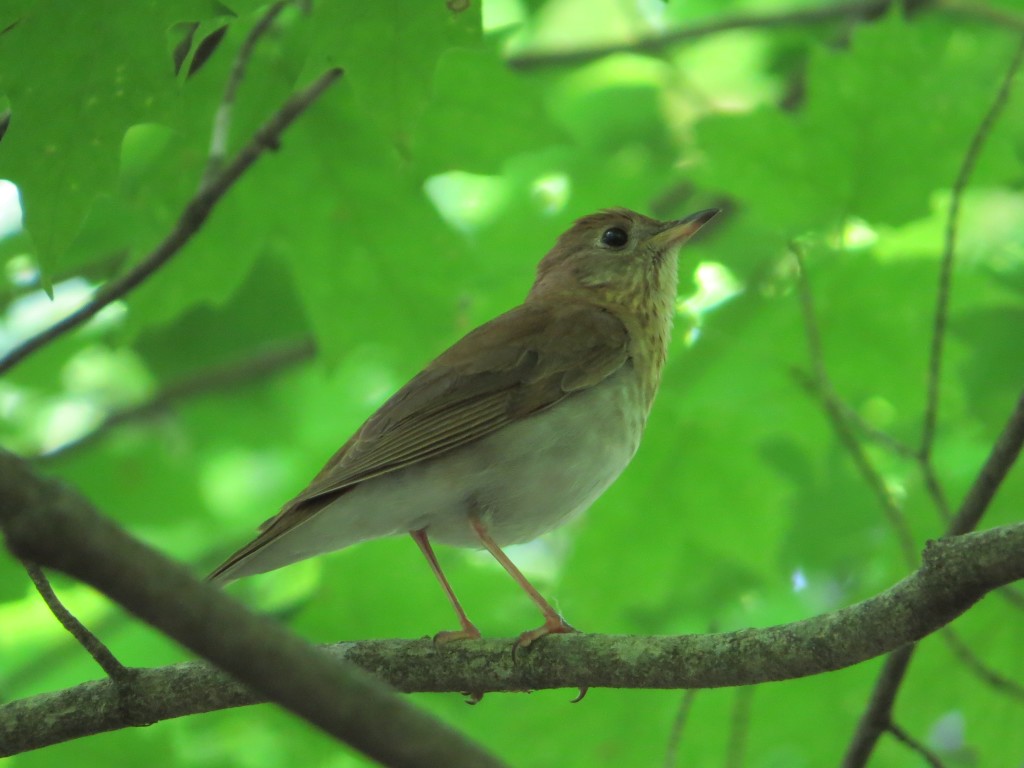 The Veery’s song is the best. It’s unmistakable song can often be heard throughout the deciduous woods of Minnesota. Never before I had I actually seen one sing.
The Veery’s song is the best. It’s unmistakable song can often be heard throughout the deciduous woods of Minnesota. Never before I had I actually seen one sing.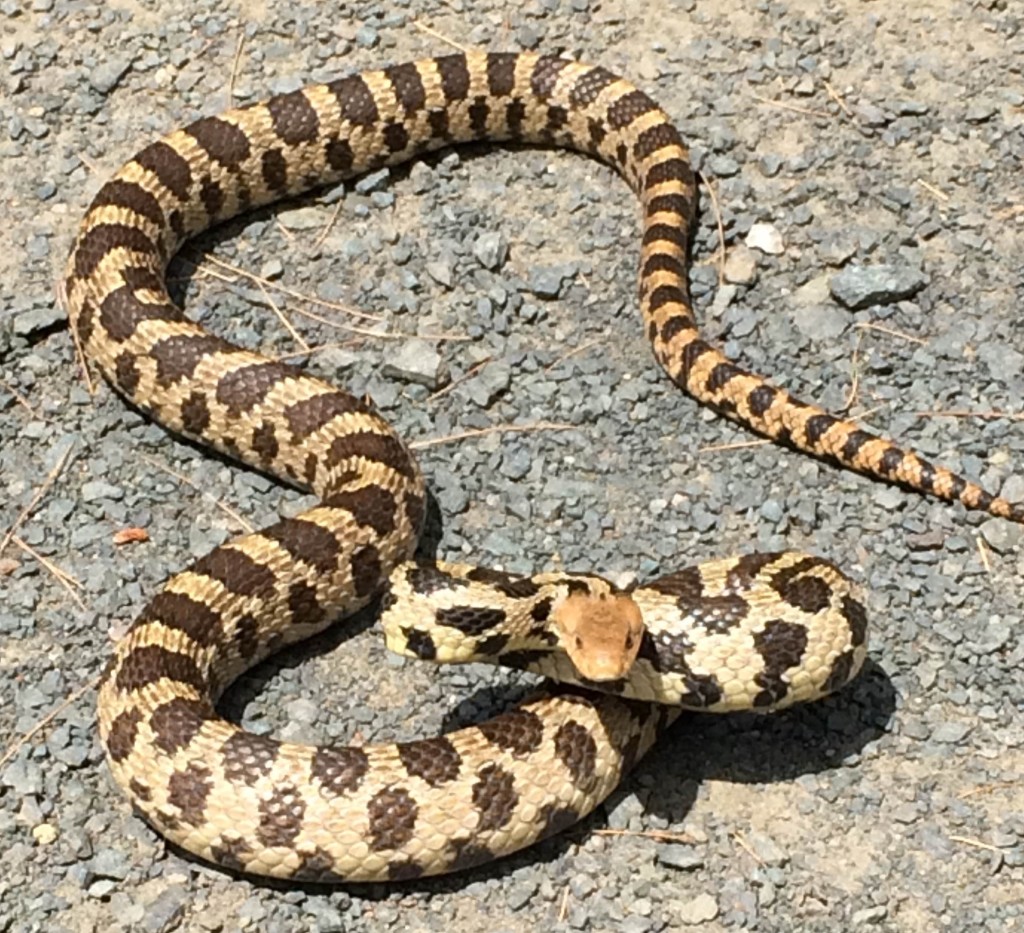 Coming up is one more Minnesota post with Tommy about a rare Warbler we went after for Tommy’s life list. And then we will cover our side trip to Wisconsin to search for two endangered species. Stay tuned.
Coming up is one more Minnesota post with Tommy about a rare Warbler we went after for Tommy’s life list. And then we will cover our side trip to Wisconsin to search for two endangered species. Stay tuned.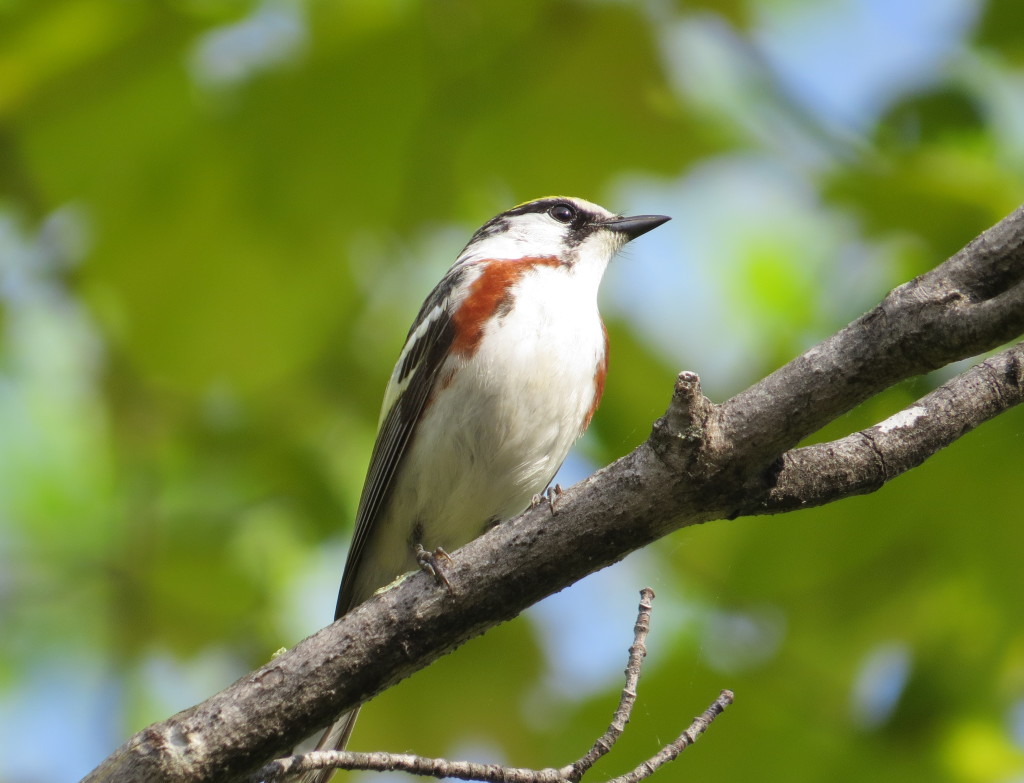
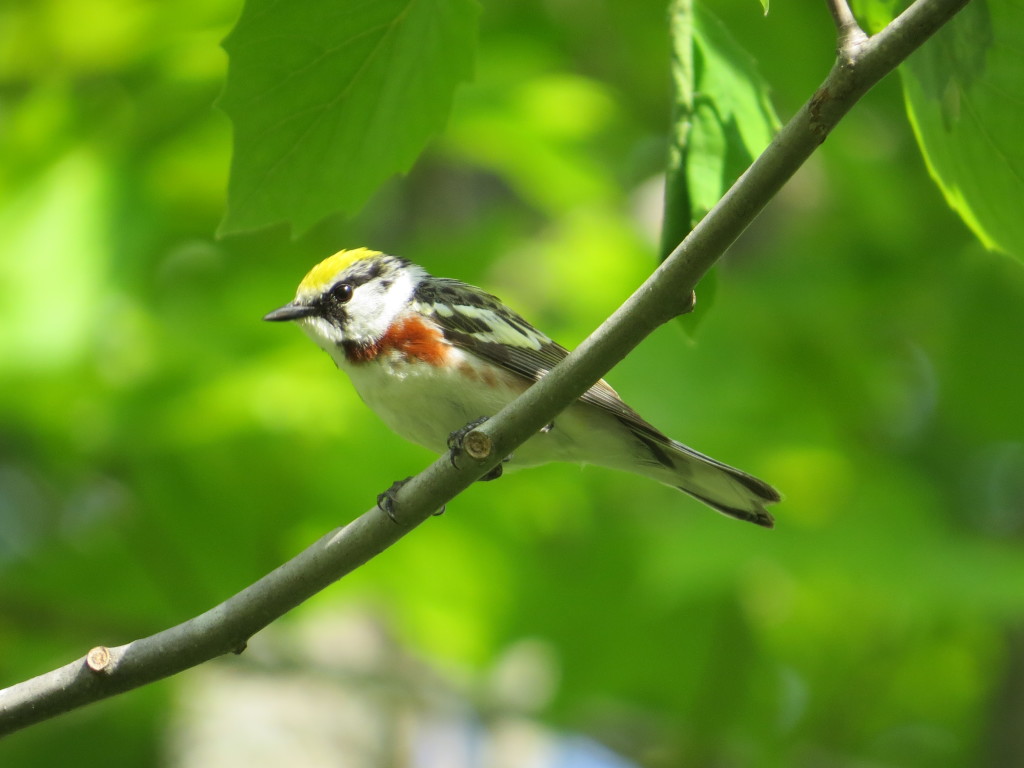
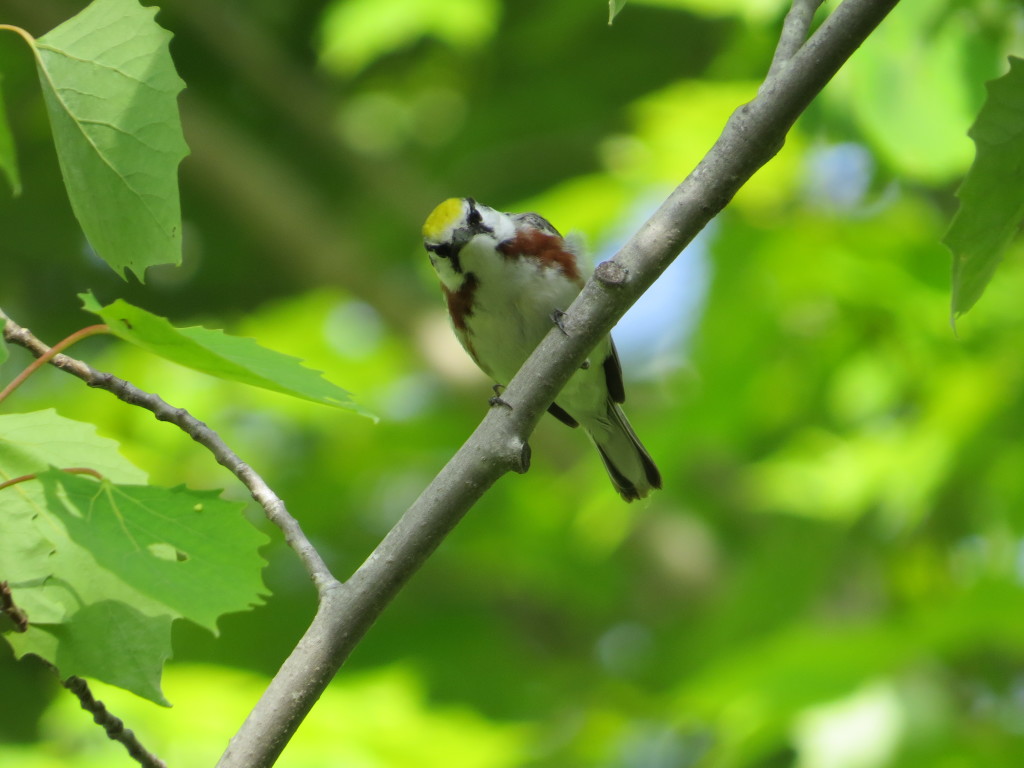
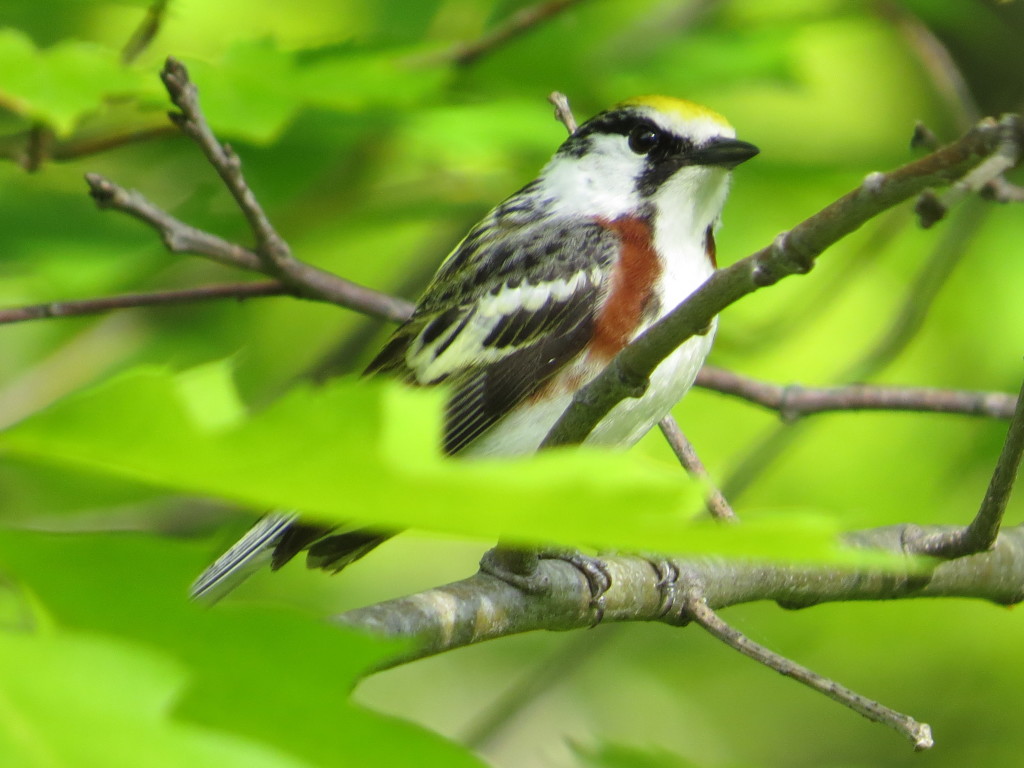
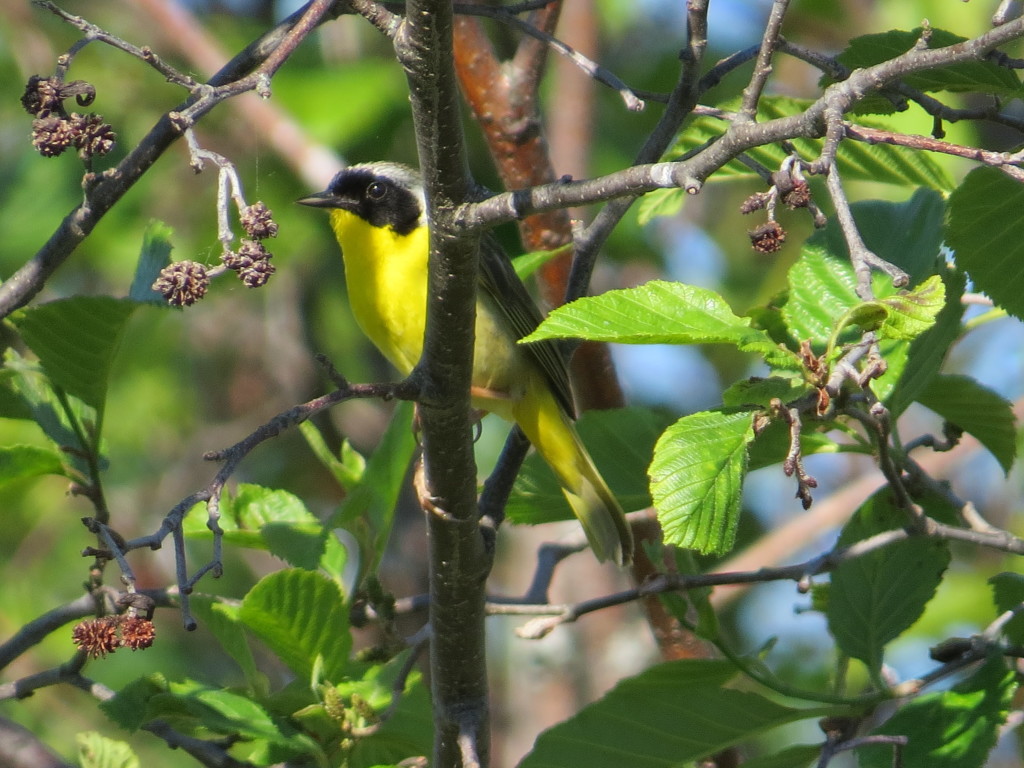
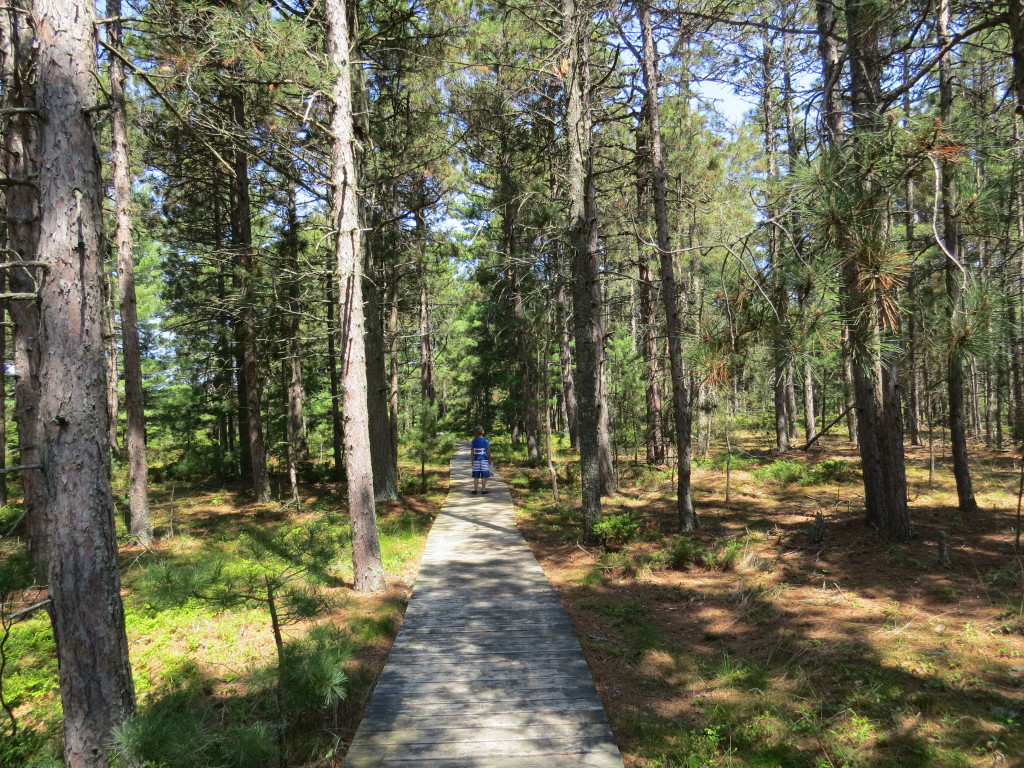 Kudos to Big Bay Town Park and Big Bay State Park for this awesome boardwalk and kudos to the PIWA for having the best habitat preference of all the northwoods Warblers.
Kudos to Big Bay Town Park and Big Bay State Park for this awesome boardwalk and kudos to the PIWA for having the best habitat preference of all the northwoods Warblers.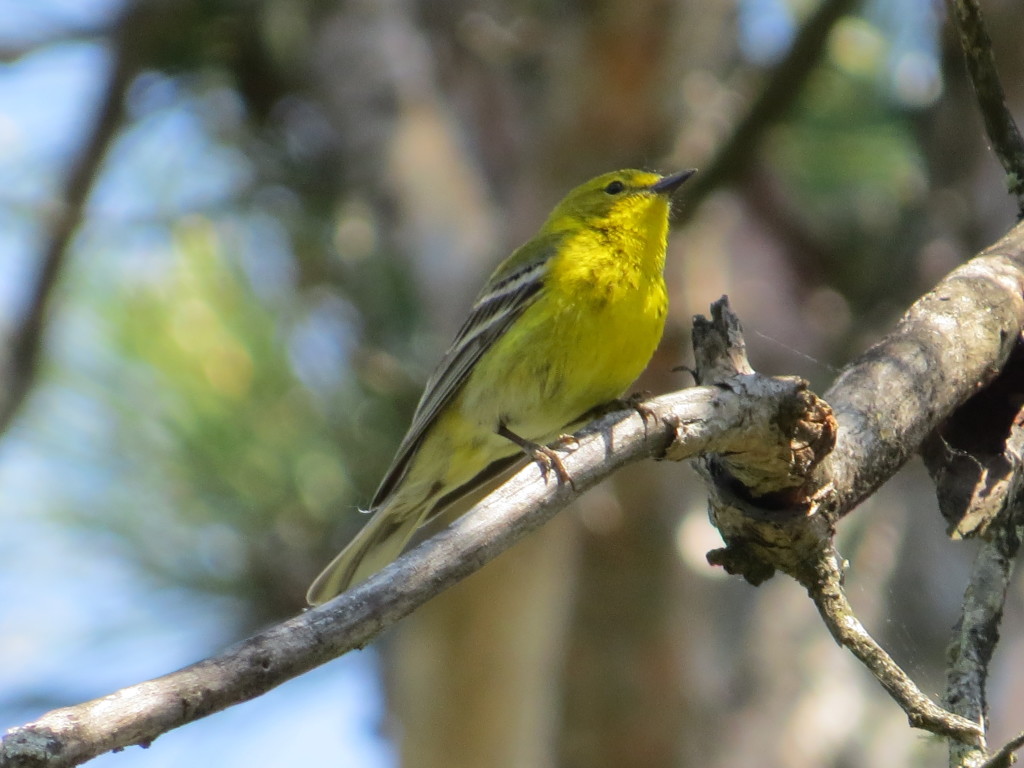
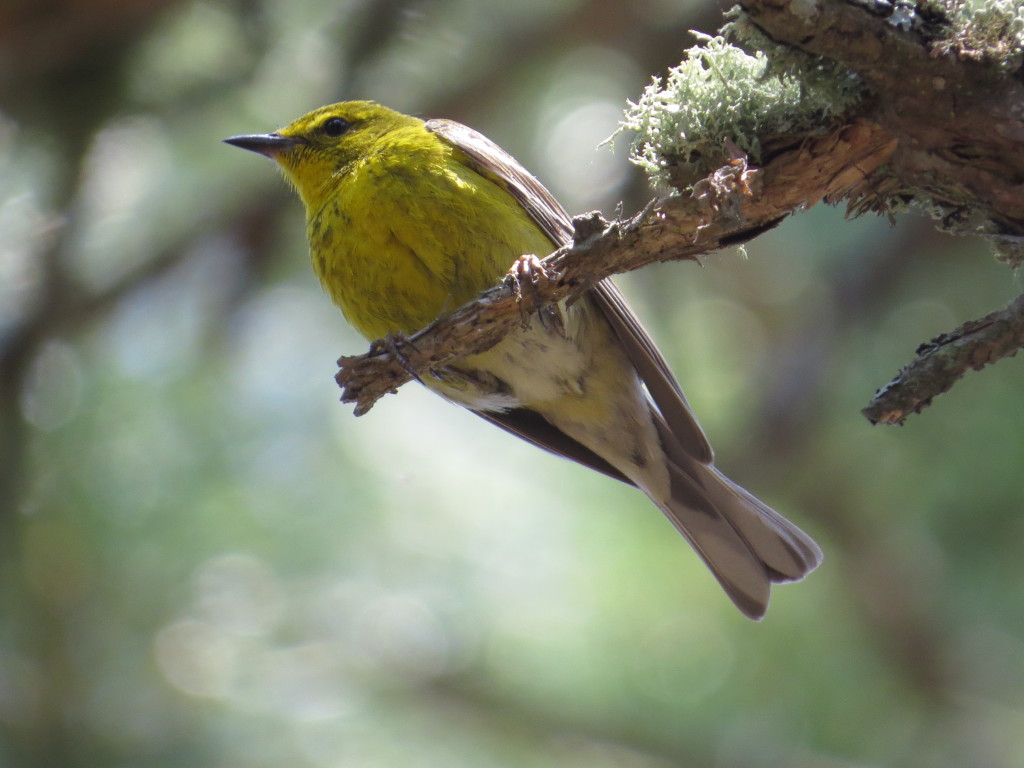
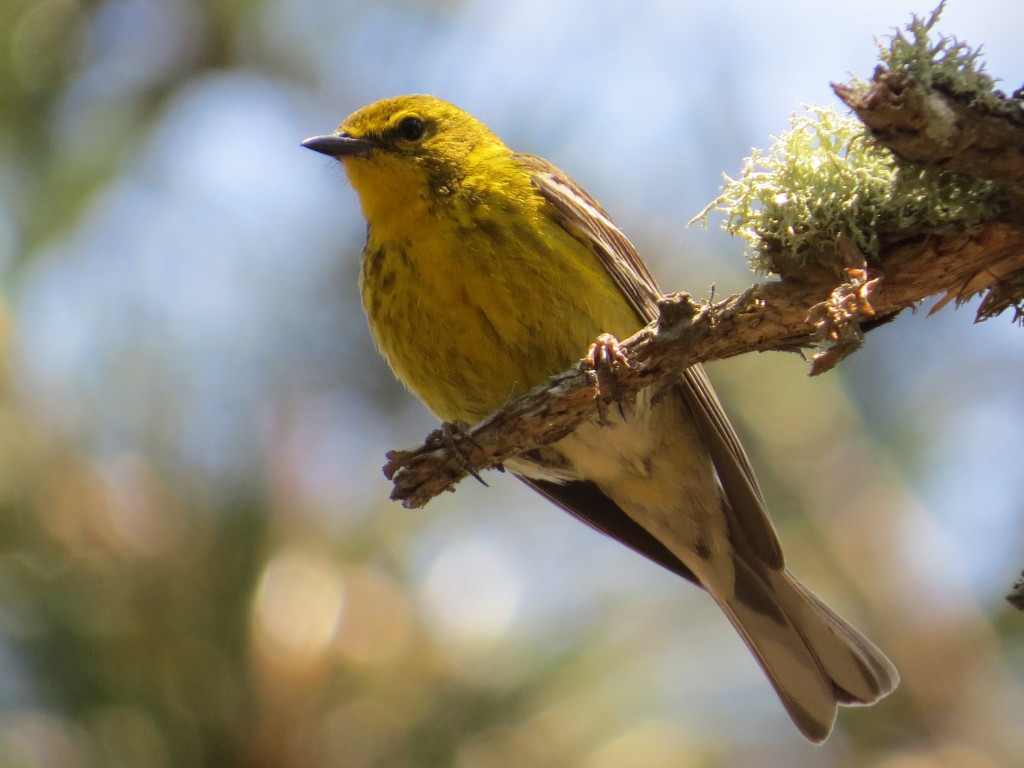
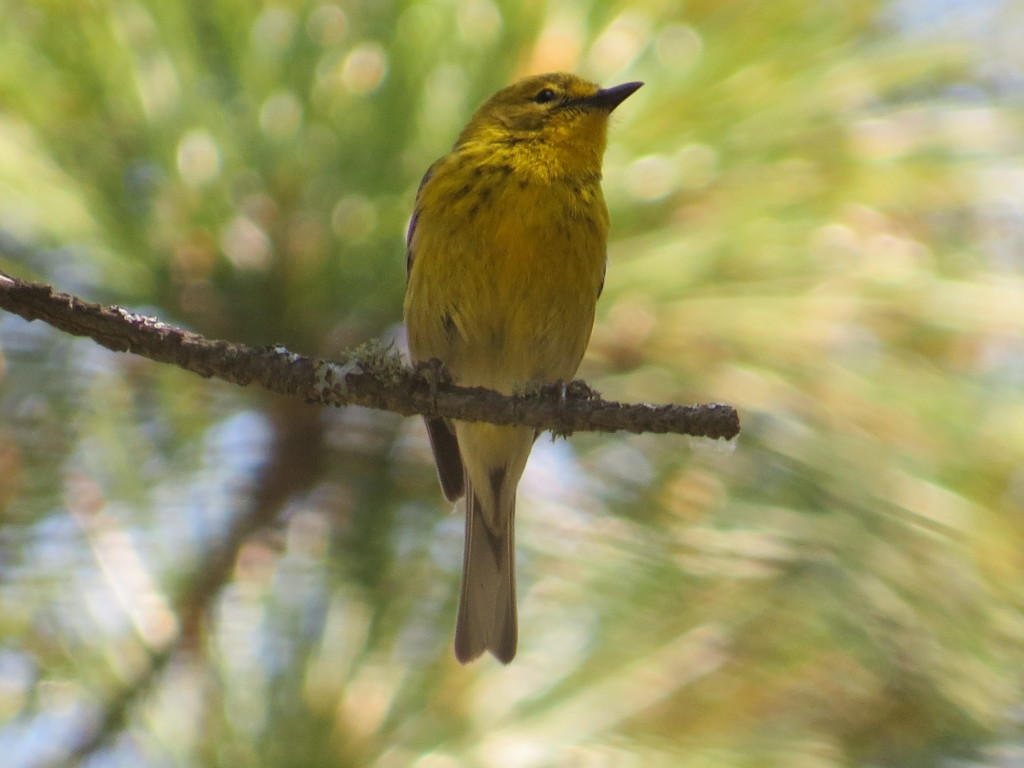
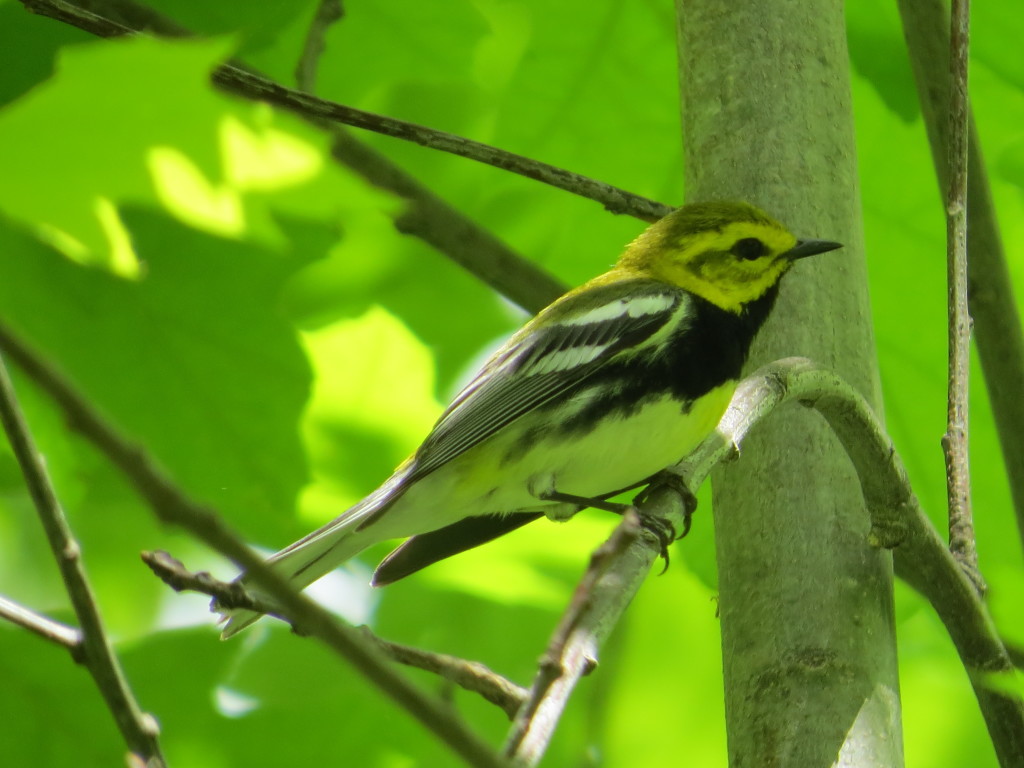
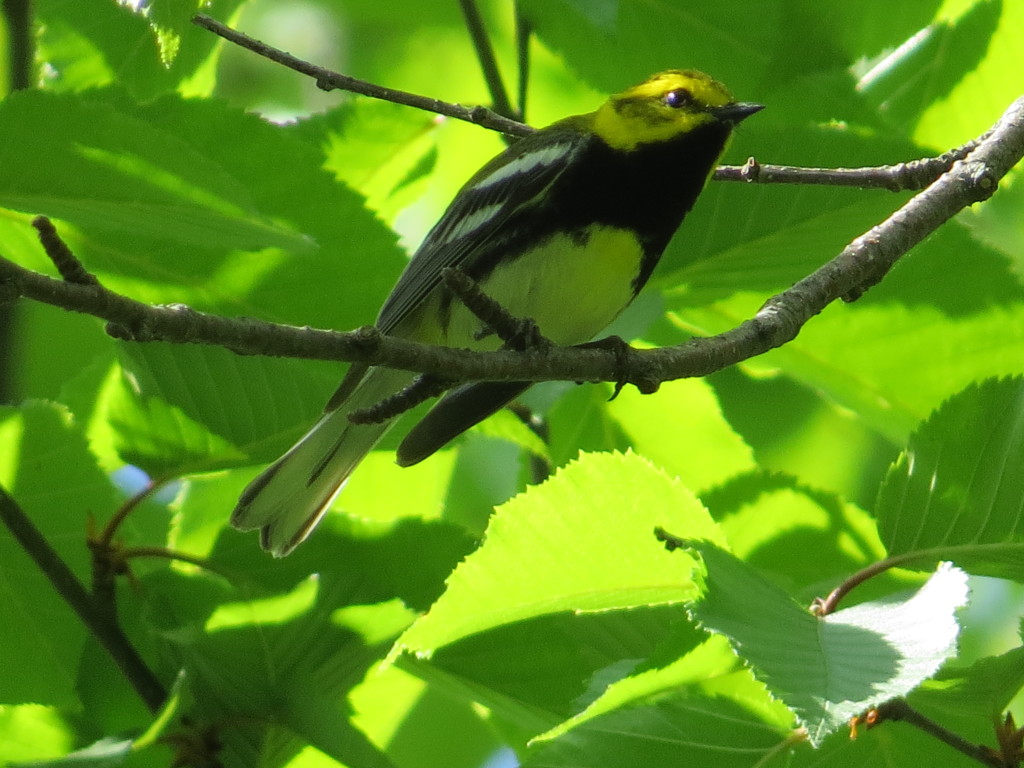 Not only did the Madeline Island Black-throated Greens have a preference for the lesser song, but they also preferred the lesser light, always perching underneath the leaves’ shade and casting them in weird, greenish light.
Not only did the Madeline Island Black-throated Greens have a preference for the lesser song, but they also preferred the lesser light, always perching underneath the leaves’ shade and casting them in weird, greenish light. 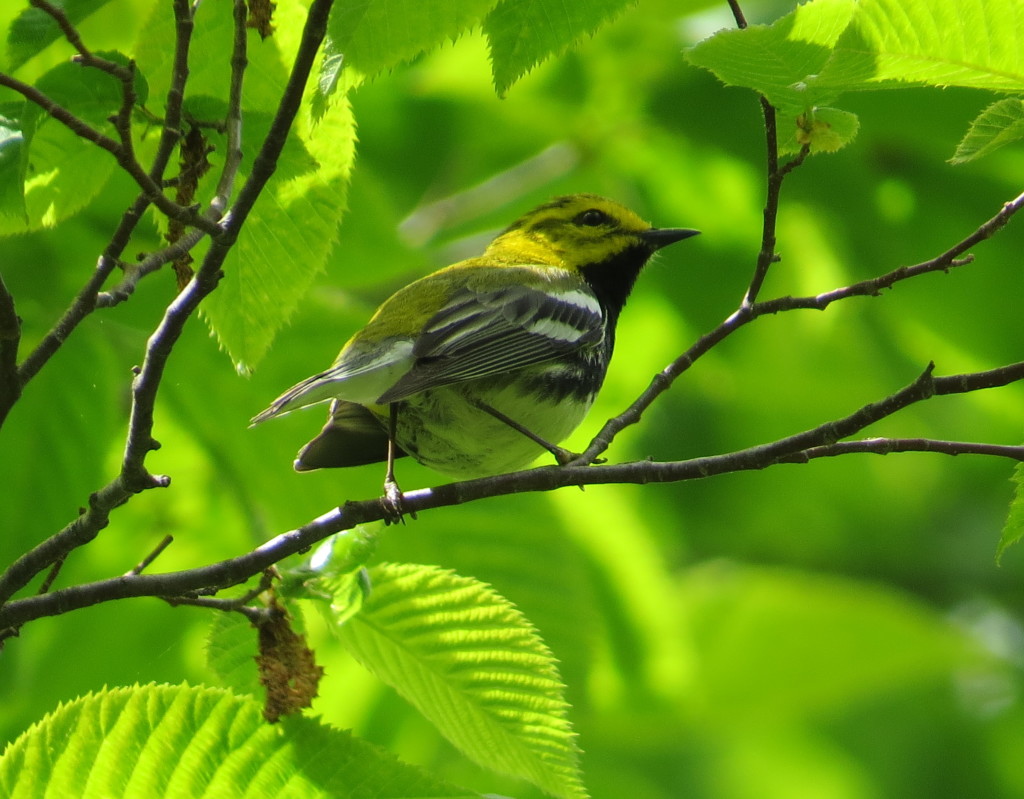 Black-bearded Green Warbler would probably be a more appropriate and much cooler name.
Black-bearded Green Warbler would probably be a more appropriate and much cooler name.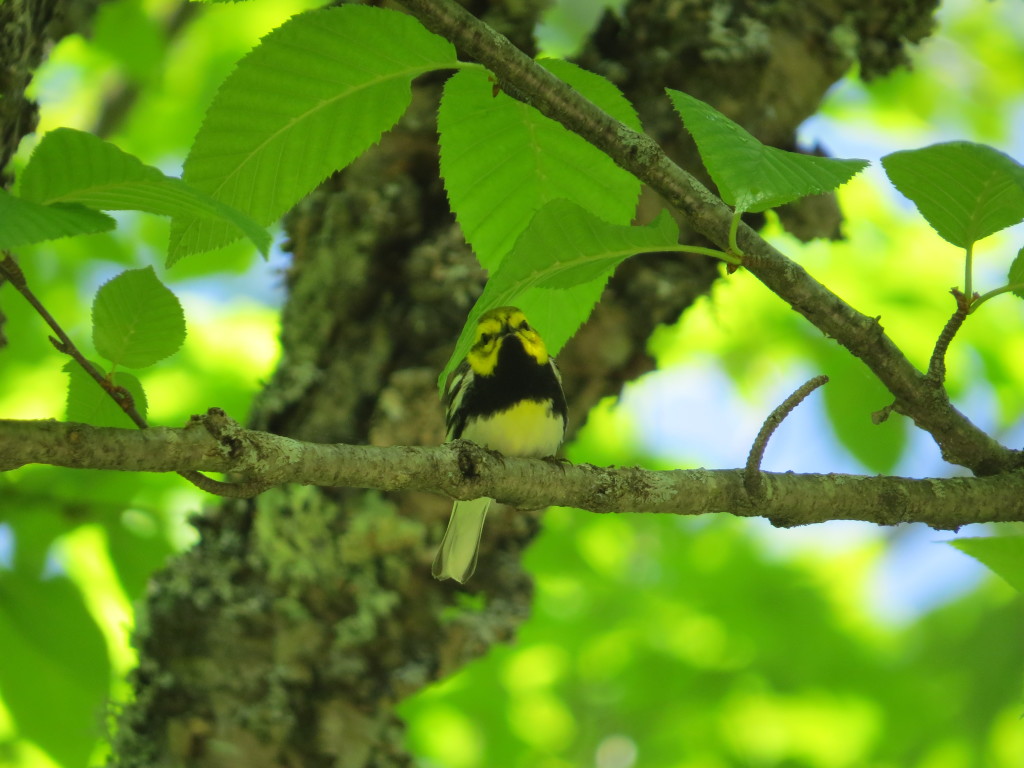
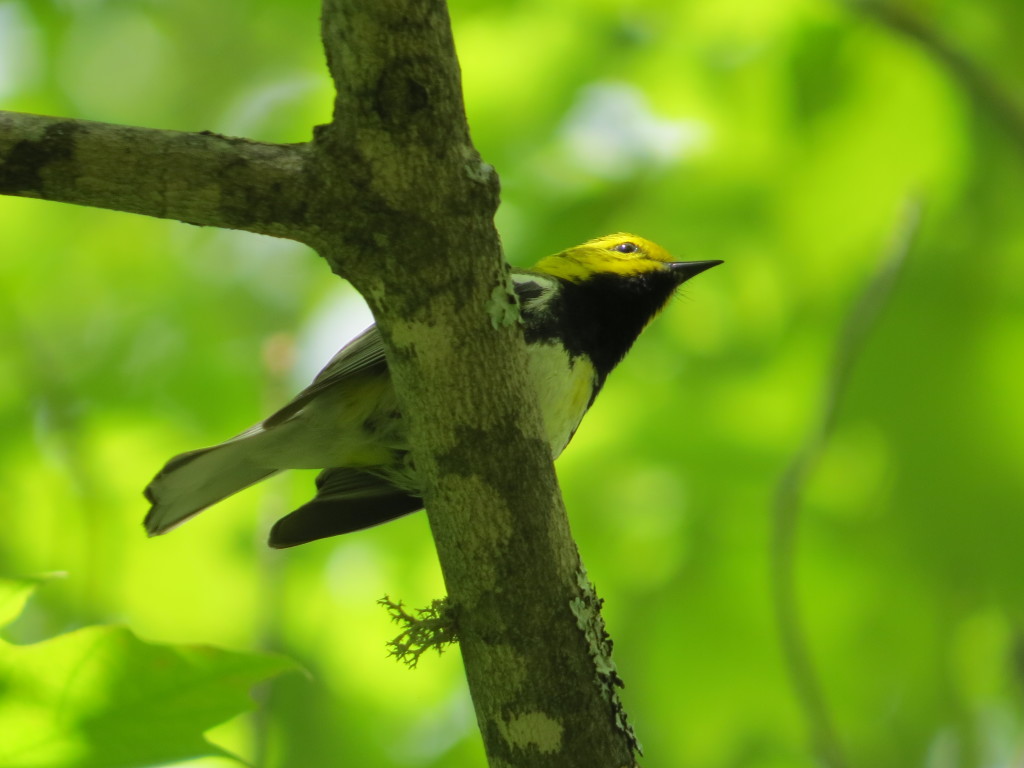 The Black-throated Greens were nice, but they really just whet my appetite for a much, much better Warbler with a black throat. Because of its stunning beauty and scarcity, the Black-throated Blue Warbler was one that I was yearning to see again since my initial viewing in 2013. It was one of my two main birding goals for the trip with the other being the Piping Plovers. I tried real hard to find one on the under-birded Madeline Island. Area birder Nick Anich had described the very particular habitat choice this species likes: mature Maple forests with a high canopy, a fairly open midstory, and a thick understory full of saplings. I’m not sure what it is they like about the Maples, but that is the same type of habitat where the Black-throated Blues are found on Oberg Mountain in Minnesota. Schoolhouse Road on Madeline Island seemed the best I could find to match this habitat description, but I just couldn’t pick out a zoo-zoo-zoo-zoo-zee from the zee-zee-zee-zoo-zees or the zoo-zee-zoo-zoo-zees of the Black-throated Greens.
The Black-throated Greens were nice, but they really just whet my appetite for a much, much better Warbler with a black throat. Because of its stunning beauty and scarcity, the Black-throated Blue Warbler was one that I was yearning to see again since my initial viewing in 2013. It was one of my two main birding goals for the trip with the other being the Piping Plovers. I tried real hard to find one on the under-birded Madeline Island. Area birder Nick Anich had described the very particular habitat choice this species likes: mature Maple forests with a high canopy, a fairly open midstory, and a thick understory full of saplings. I’m not sure what it is they like about the Maples, but that is the same type of habitat where the Black-throated Blues are found on Oberg Mountain in Minnesota. Schoolhouse Road on Madeline Island seemed the best I could find to match this habitat description, but I just couldn’t pick out a zoo-zoo-zoo-zoo-zee from the zee-zee-zee-zoo-zees or the zoo-zee-zoo-zoo-zees of the Black-throated Greens.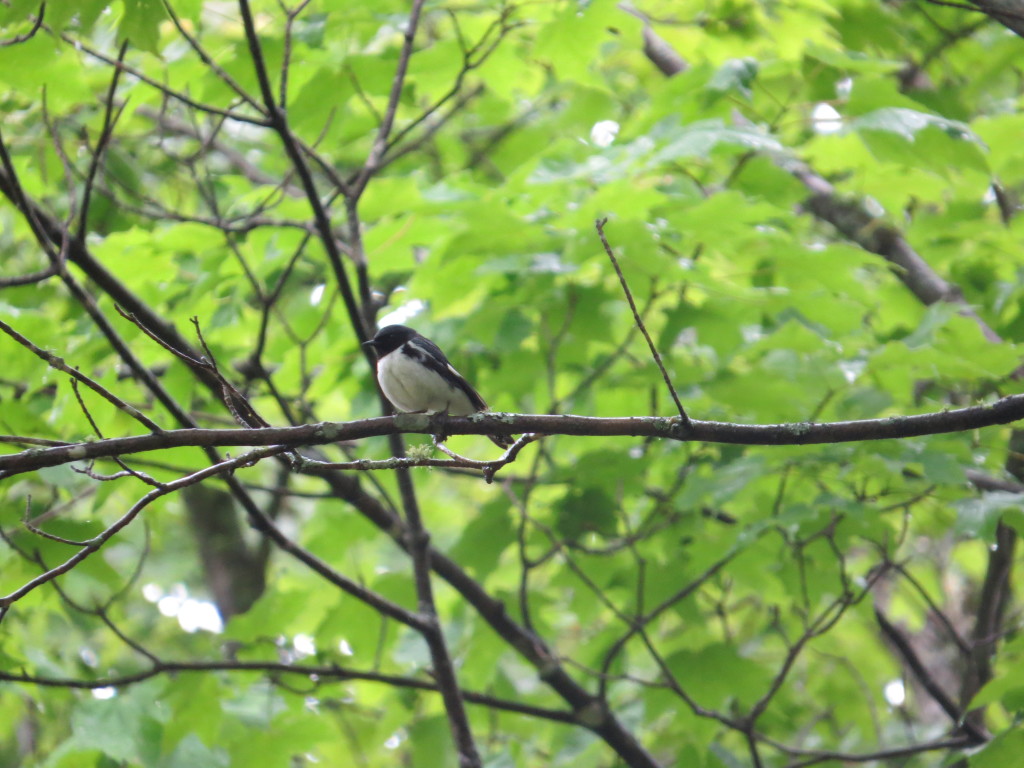 Just as presidential hopefuls are emerging left and right declaring their intentions, I, too, am now making a bold announcement: the Black-throated Blue Warbler is my favorite Warbler. Though I was hooked by the Chestnut-sided, though I’ve stood in awe of the Blackburnian, and though I’ve been dazzled by Painted Redstarts at my feet, the Black-throated Blue is simply the best in my book. I have yet to see the Red-faced, but I don’t even think that beauty could change my mind. My wardrobe is disproportionately blue after all.
Just as presidential hopefuls are emerging left and right declaring their intentions, I, too, am now making a bold announcement: the Black-throated Blue Warbler is my favorite Warbler. Though I was hooked by the Chestnut-sided, though I’ve stood in awe of the Blackburnian, and though I’ve been dazzled by Painted Redstarts at my feet, the Black-throated Blue is simply the best in my book. I have yet to see the Red-faced, but I don’t even think that beauty could change my mind. My wardrobe is disproportionately blue after all.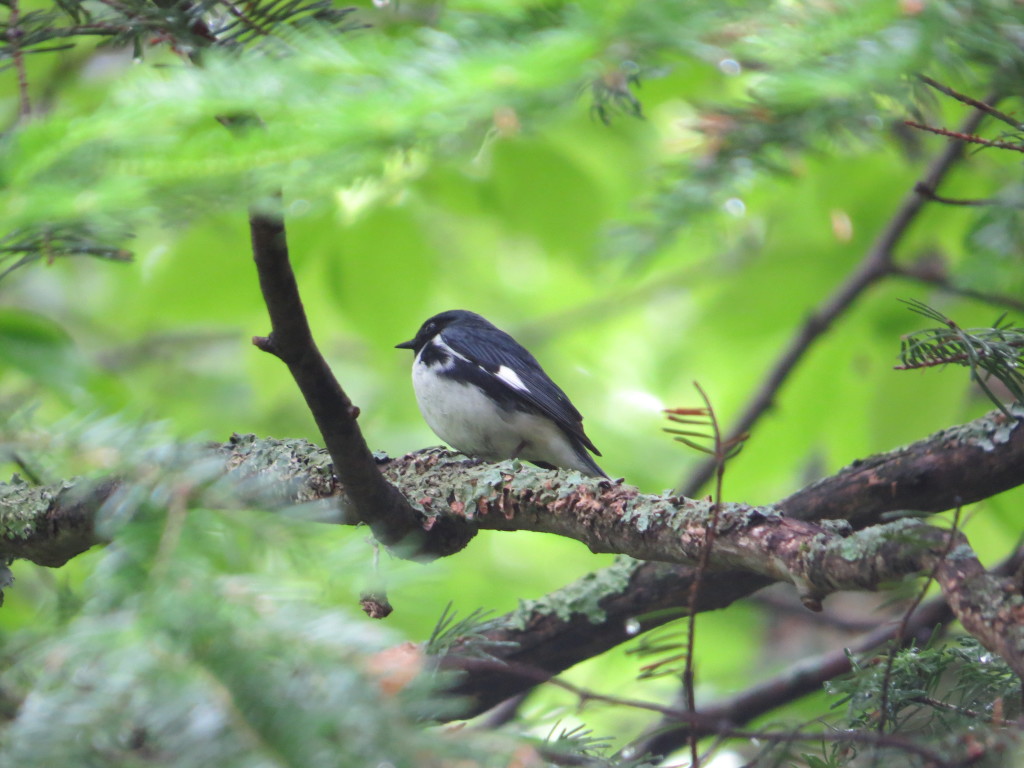
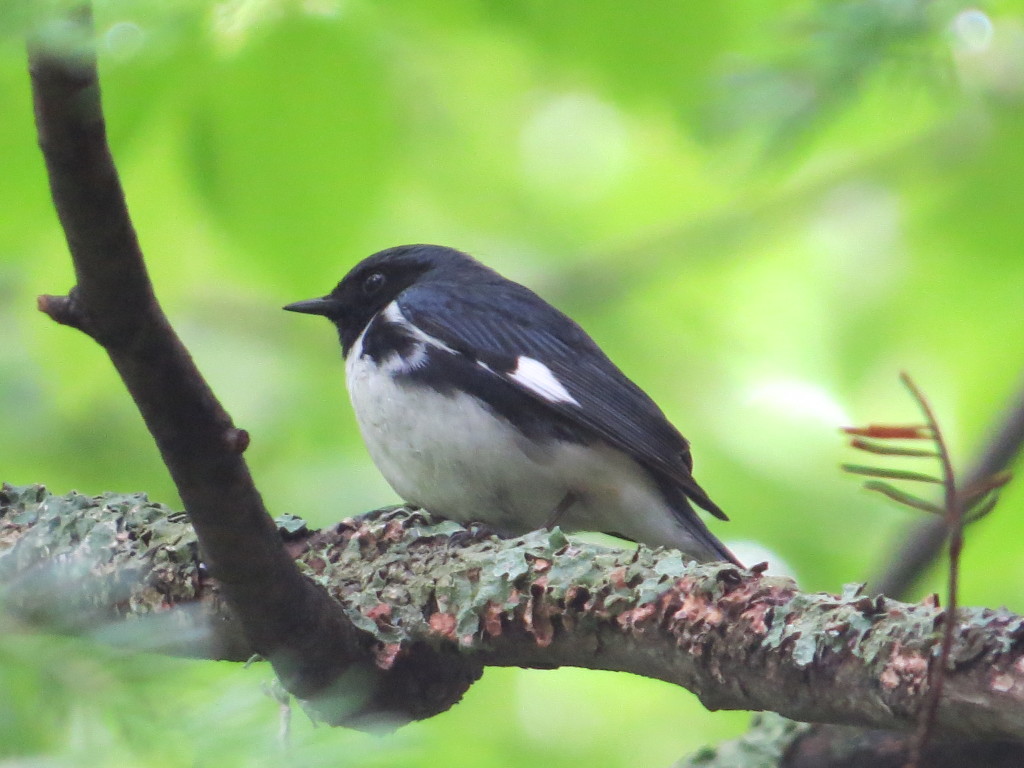
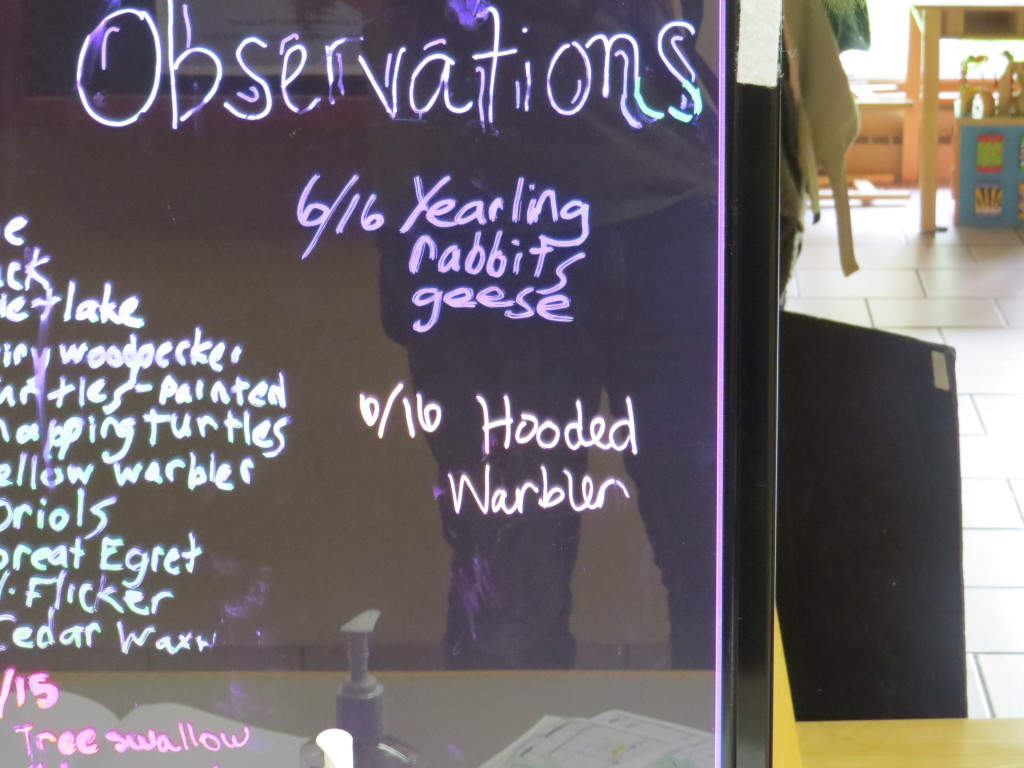
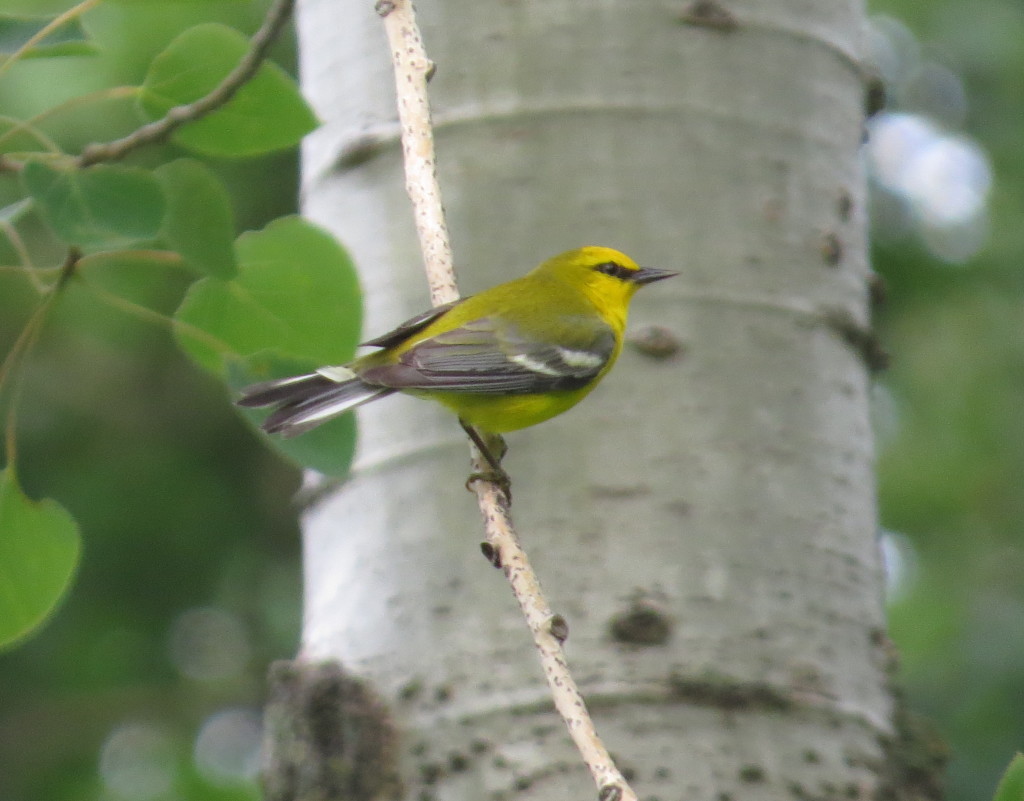
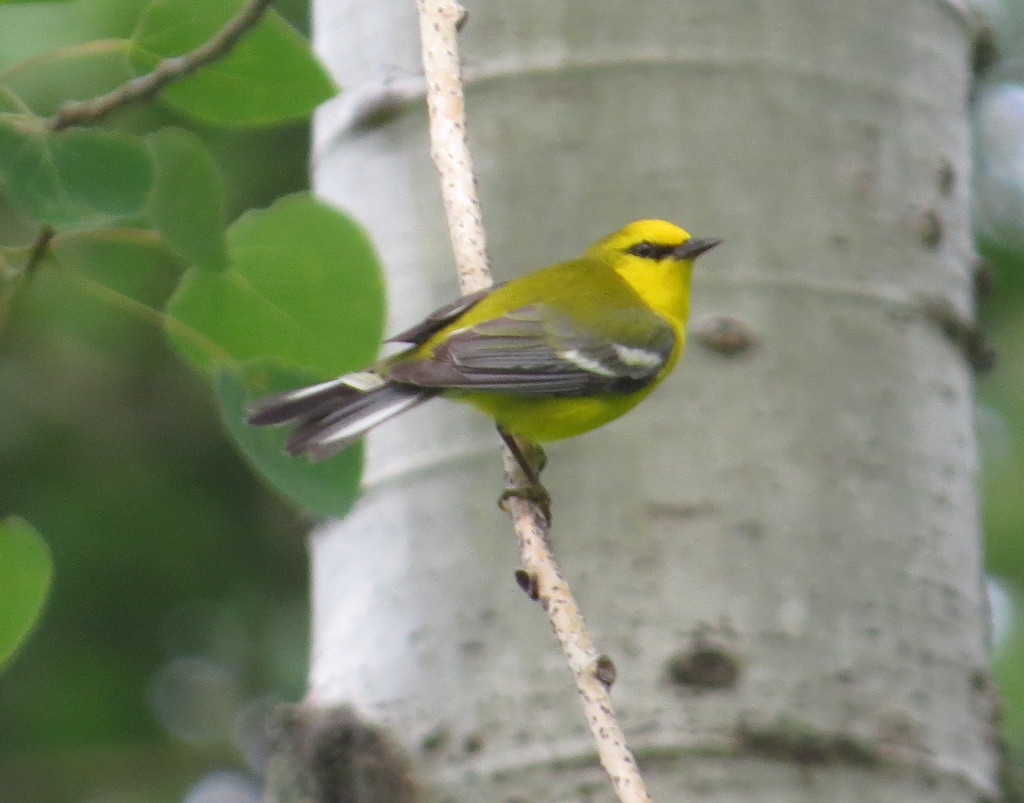 There are more Warblers on the horizon as I have since made two post-MI trips to northern MN with a third one coming this weekend. But first, what could make a Woodpecker chase so compelling?
There are more Warblers on the horizon as I have since made two post-MI trips to northern MN with a third one coming this weekend. But first, what could make a Woodpecker chase so compelling?
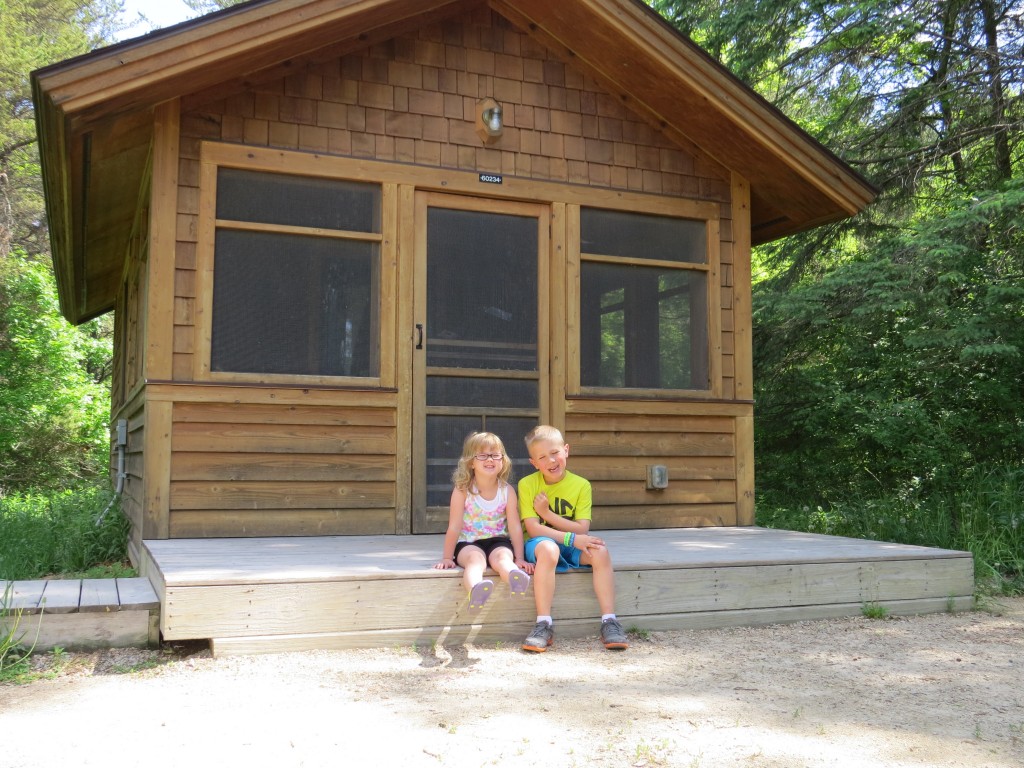
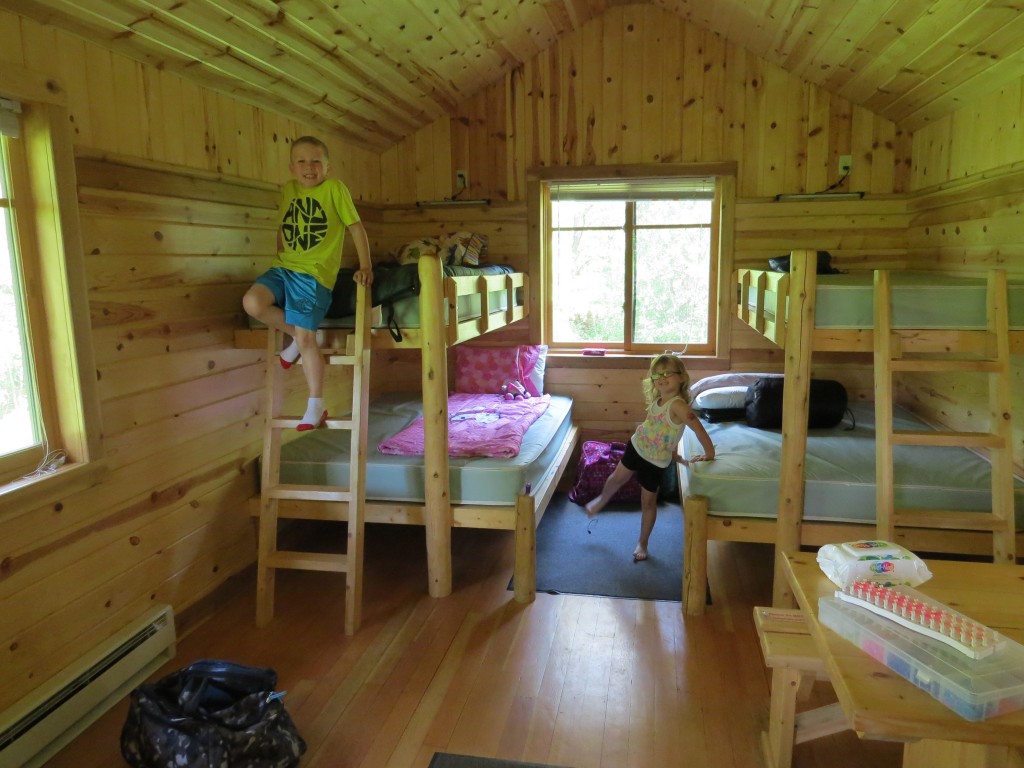
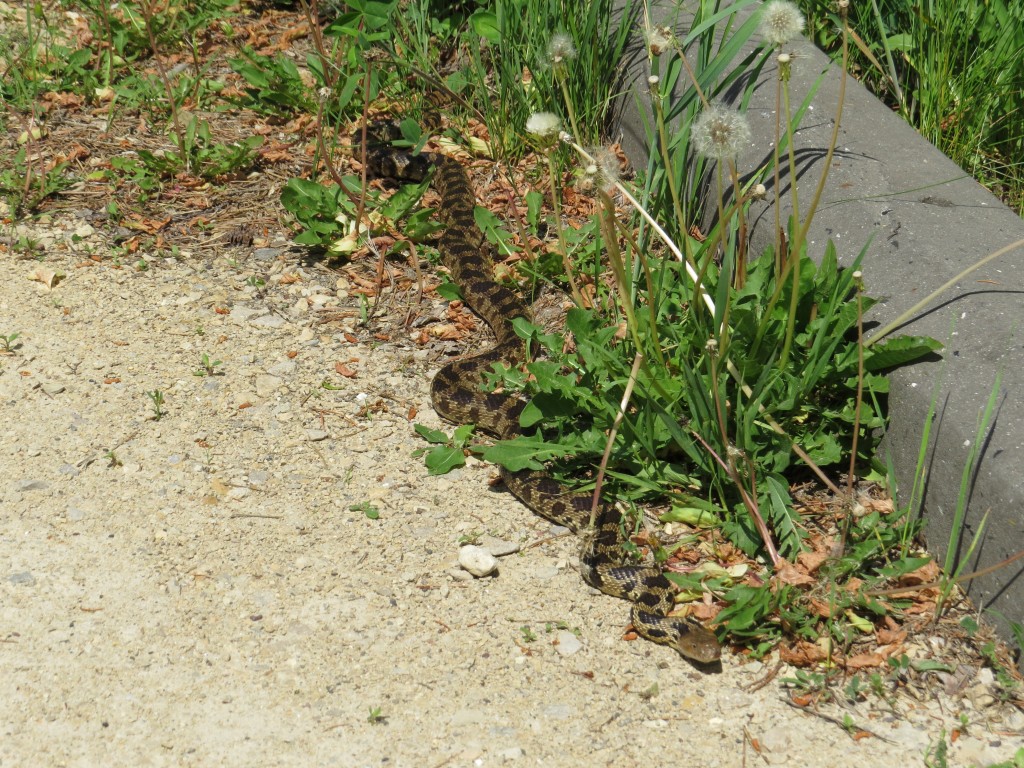
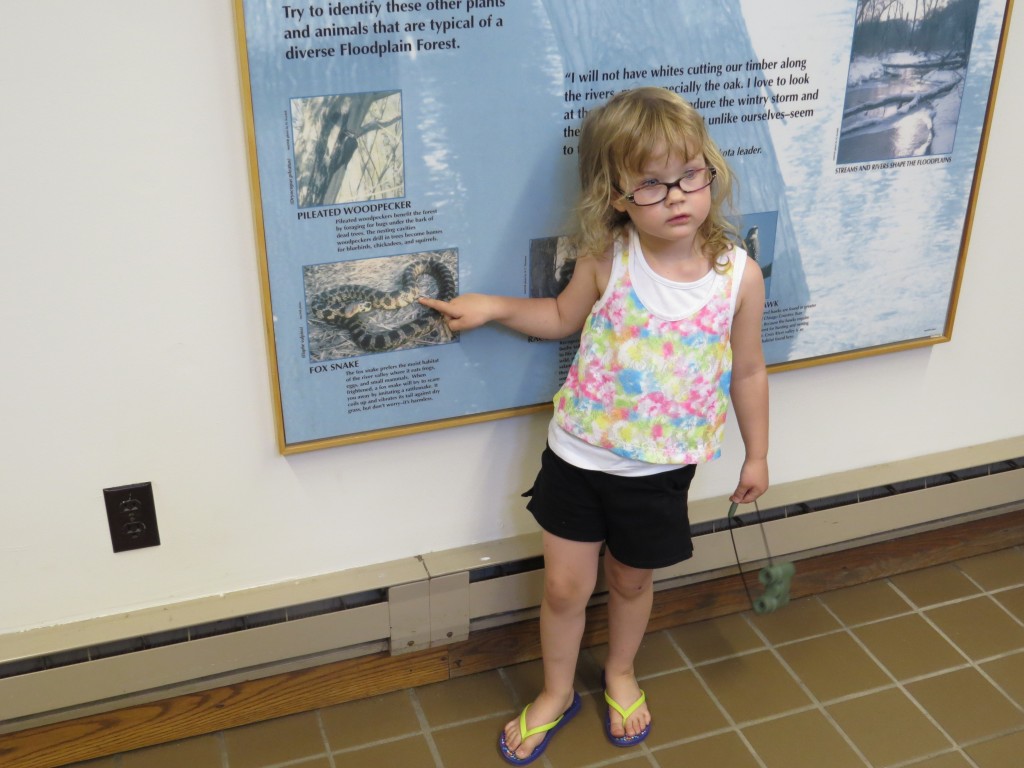
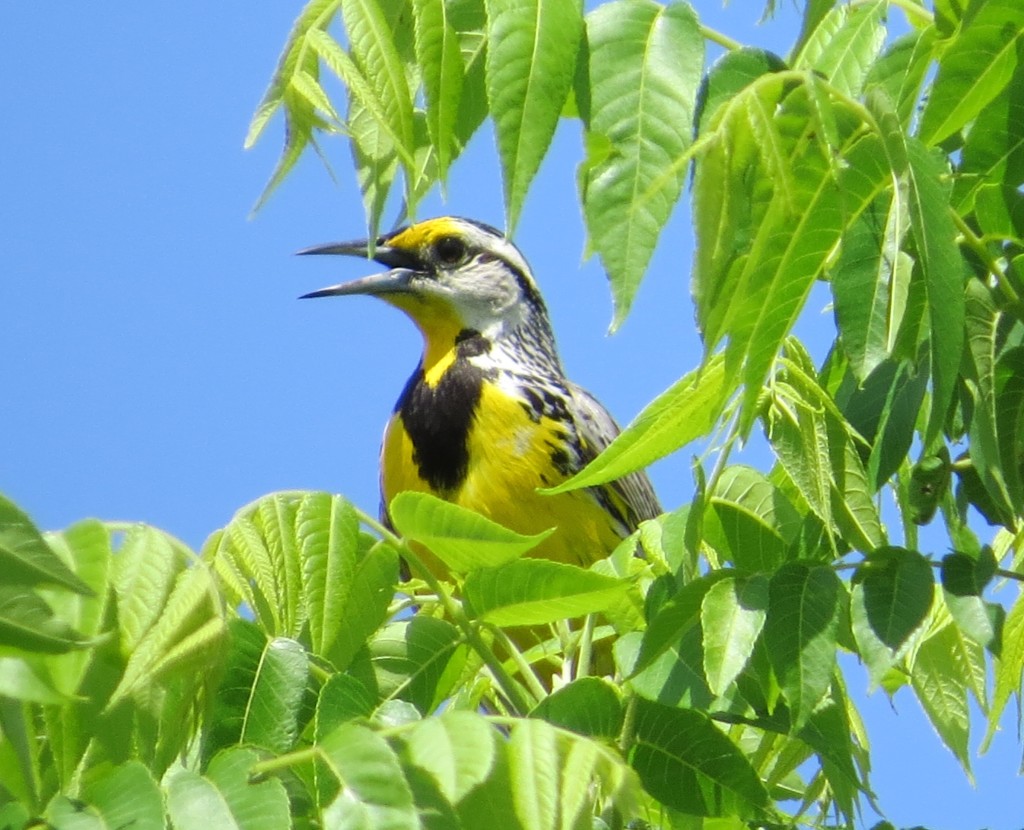
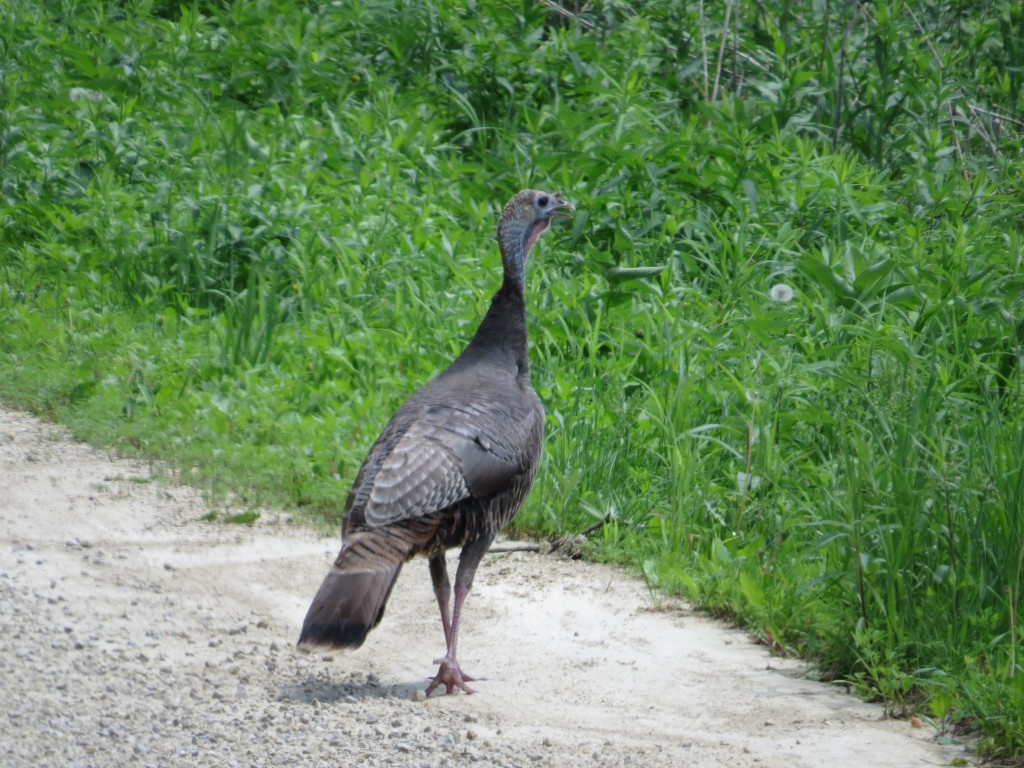
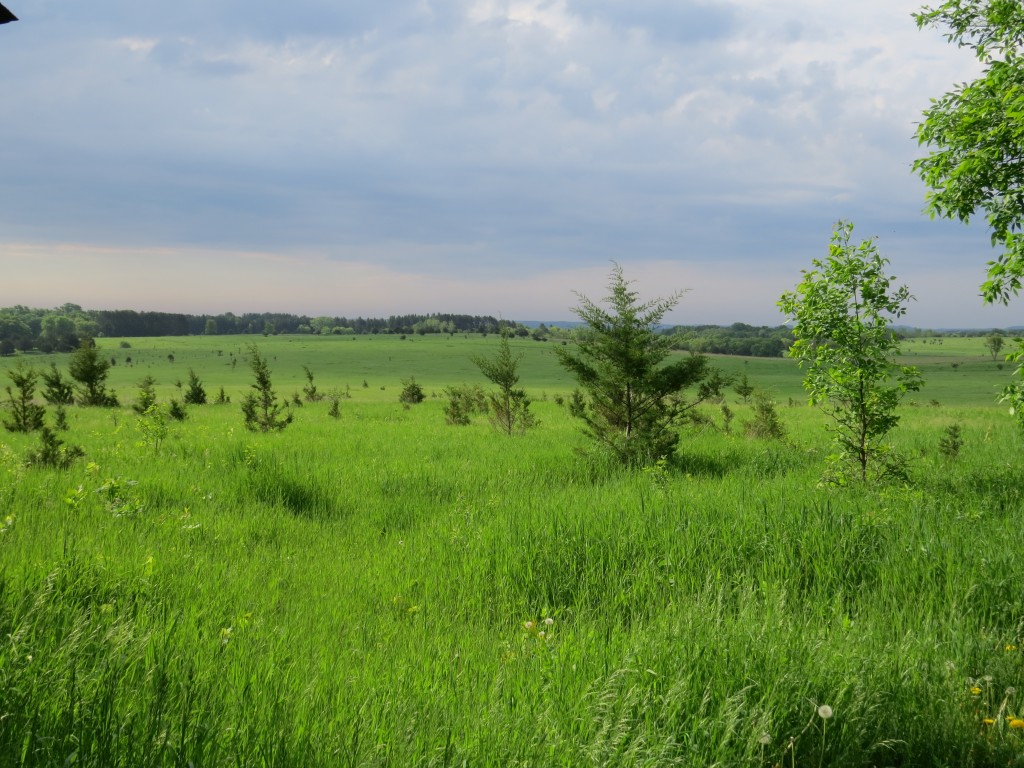
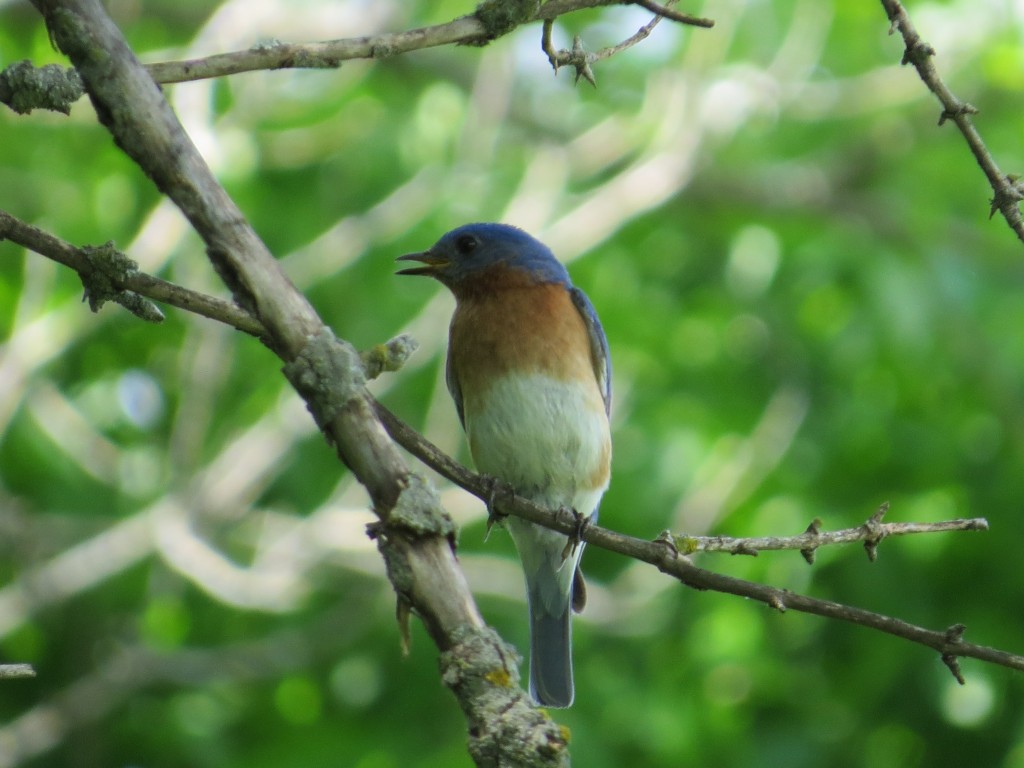
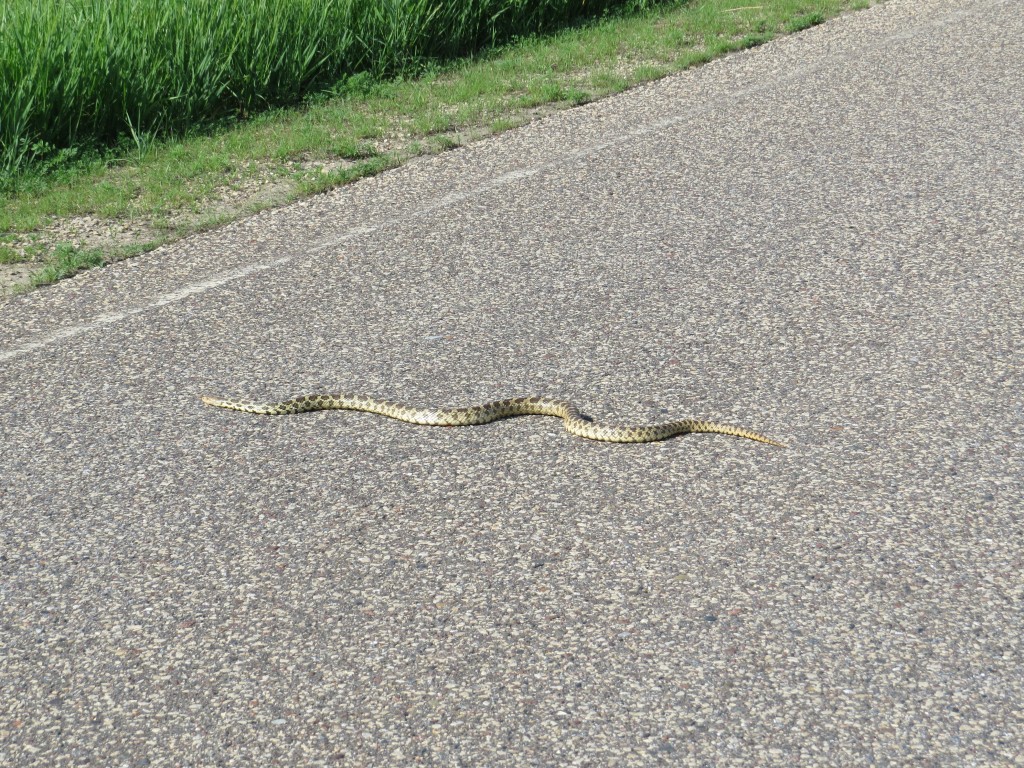 After this experience we finally made it to the trailhead. This time things went a lot smoother with a lot less complaining. The hike down the large hill was the most challenging as the sign shows, though Marin was convinced the sign meant it was a snake trail. Given our day, who could blame her? Here you can see Evan contemplating her observation.
After this experience we finally made it to the trailhead. This time things went a lot smoother with a lot less complaining. The hike down the large hill was the most challenging as the sign shows, though Marin was convinced the sign meant it was a snake trail. Given our day, who could blame her? Here you can see Evan contemplating her observation.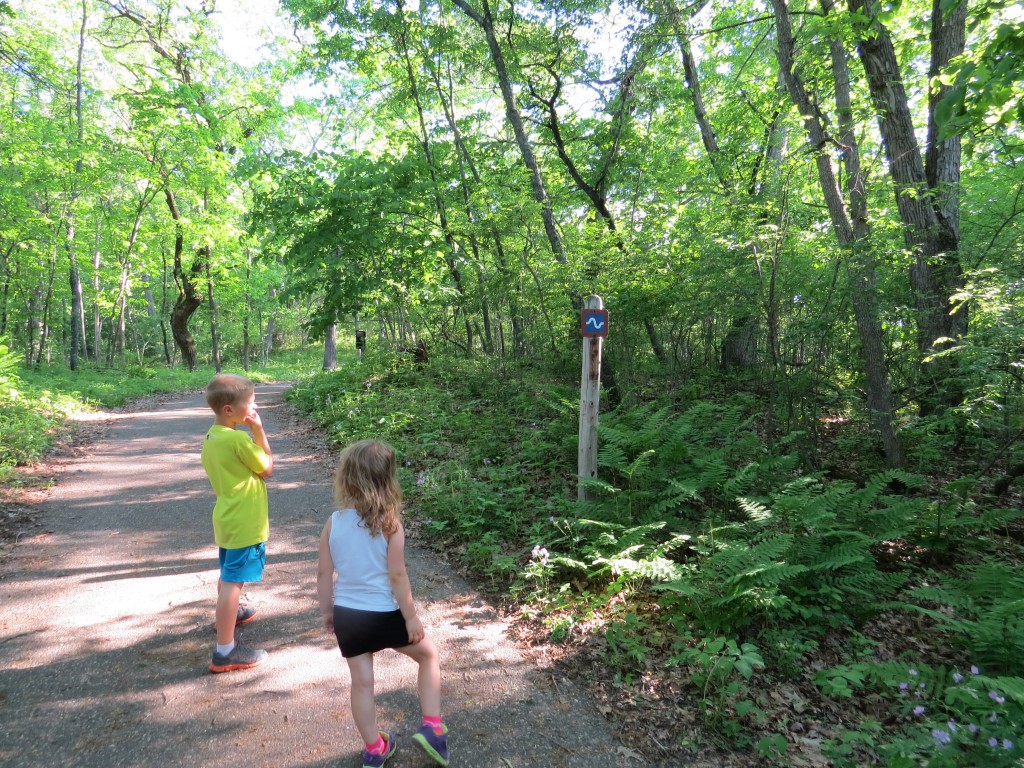 The river bottoms trail was flat and easy as it took us right next to the St. Croix and right along the base of an oak-wooded hillside where the Hooded Warblers were known to be. I knew the song well as its been my phone’s ring tone for some time, but I just wasn’t hearing it. Argh. Later on, though, as we passed by some flooded timber along the edge of the river, I heard the distinctive call of the Prothonotary Warbler! Not the main target, but good enough! After a little while we got to lay our eyes on it. What a thrill it was to see it for the first time!
The river bottoms trail was flat and easy as it took us right next to the St. Croix and right along the base of an oak-wooded hillside where the Hooded Warblers were known to be. I knew the song well as its been my phone’s ring tone for some time, but I just wasn’t hearing it. Argh. Later on, though, as we passed by some flooded timber along the edge of the river, I heard the distinctive call of the Prothonotary Warbler! Not the main target, but good enough! After a little while we got to lay our eyes on it. What a thrill it was to see it for the first time!